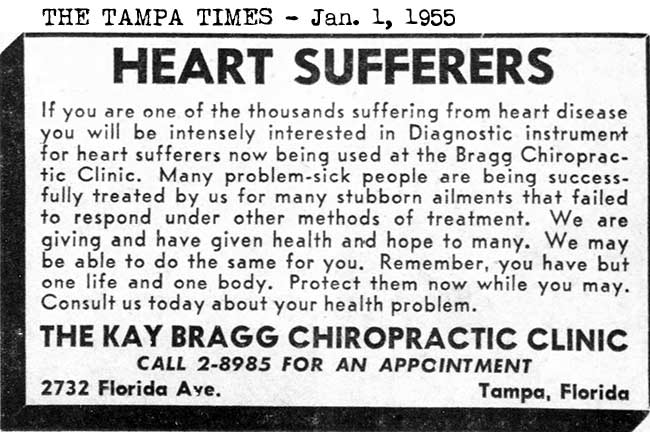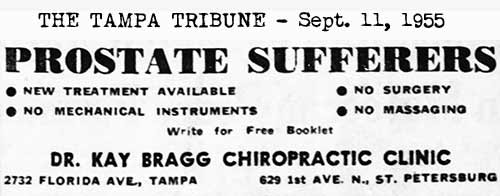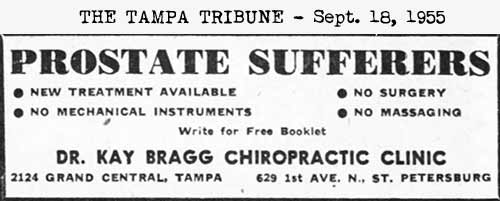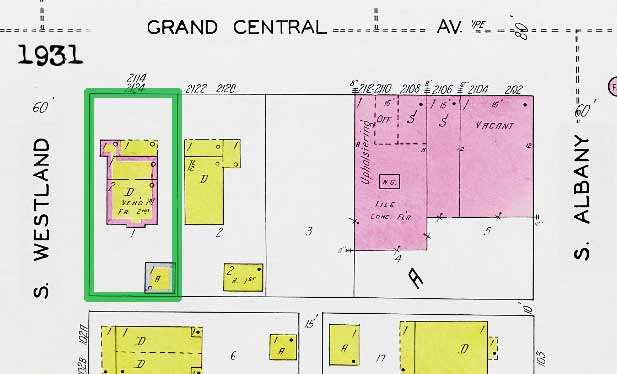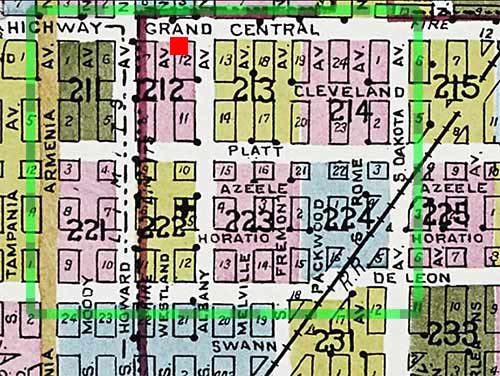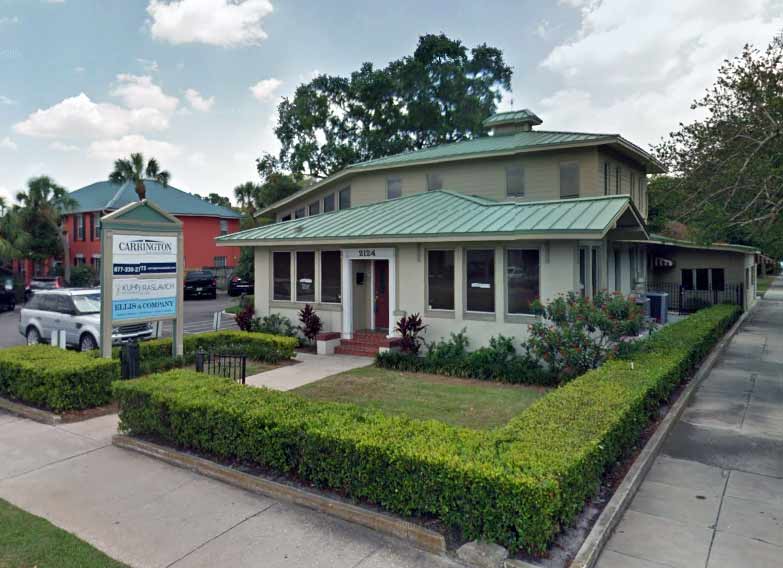|
|
|
Was Dr. Bragg a real doctor? Was he even an actual person?
|
|
||||||||||||||||||||||||||||||||||||||||||||||||||||||||||||||||||||||||||||||||||||||||||||||
|
BRAGG'S USED CAR
BUSINESS PROSPERS WITH UNIQUE NEWSPAPER ADS In the next couple of years, Bragg's ads began to grow in size and frequency, and soon his skill at advertising began to show as his ads became more engaging. |
|
|
Notice the first ad shows Kay's lot was next to Holtsinger's. |
|
|
|
When
he didn't run a sales ad, he ran this one.
|
|
BRAGG PARTNERS WITH CHARLIE DRINARD |
|
|
In this Nov. 17, 1947 ad, Bragg announced a new location at 1710 Grand Central Ave. and new company name upon having Charlie E. Drinard join him. |
Previously, Drinard was announced as the new manager of the Time Loan Company on May 1, 1947, even though the company's ads first started on April 26 with Drinard already listed as the manager. |
|
|
|
|
Sanborn Fire Insurance map from the Univ. of Florida digital maps collection.
|
|
|
|
|
|
|
|
|
|
|
|
BRAGG & DRINARD'S UNIQUE NEWSPAPER ADS
Bragg & Drinard's advertising was quite different from the other car ads. Whereas the others were straightforward, to the point--make, model and price, B & D's was similar to the Burma Shave roadside ads of the 1930s through 1950s. Bragg's early career was in advertising, so he had learned what got the consumer's attention, and he may have also been influenced by the popular, award-winning ads found in Tampa's newspapers by Carl Stayer of the Goody Goody drive-in on Florida Avenue. They were conversational and personal and probably quite expensive for their time.
The ad below was one long column. The vertical space has been
edited out and the text cut into three sections to better fit
this space.
Readers were kept in suspense...
Meanwhile, a different series
running in the Tribune:
|
|
BRAGG & DRINARD EXPAND TO A SECOND LOT Bragg & Drinard expanded to a 2nd lot in March, 1948; 1401 Florida Ave. |
|
|
|
|
|
The 1931 map below shows the location of Bragg & Drinard's second lot at 1401 Florida Avenue. It was occupied by a 2-story wood frame dwelling but by 1948 most wood frame dwellings would have been replaced by brick or block buildings. Place your cursor on the map to see this area in recent times.
The ad below has been cut into 4 columns from 1 long column. |
|
|
|
|
|
|
ARMY DAY AD - THE TAMPA TIMES, April 6, 1948 This full page ad in the Tampa Daily Times on April 6, 1948 sponsored by many Tampa businesses, including Bragg & Drinard Motor Co., announced an open house at Ft. Homer Hesterly armory in West Tampa. Construction of the armory began in 1938 and the armory was completed in 1941, dedicated and named for Lt. Col. Homer Wynne Hesterly on Dec. 8, 1941 (the day after the attack on Pearl Harbor). ORIGINS OF ARMY DAY (from military.com) Army Day should not be confused the Army's Birthday, which is celebrated on June 14. The origins of Army Day can be traced back to a little-known Defense Test Day, which was observed only twice: once in 1924 and once in 1925. Congress then disallowed any further observances of this day. In response, the Military Order of the World War under Colonel Thatcher Luquer established Army Day. Army Day was first celebrated on May 1, 1928. That date was chosen in hopes of dampening Communists' celebration of Workers' Day, which also occurs on May 1. But, starting in 1929, Army Day was changed to April 6, the anniversary date of the United States' entry into World War I. Army Day was established as a nationwide observance to draw public attention to national defense and to acquaint the public with Army activities. In addition, the day was used to stress the need for military preparedness, which the nation had lacked as it entered earlier major conflicts. " |
|
The failure to make adequate preparation for the inevitable struggle, the consequent suffering from disease and death entailed upon the armies which were hastily raised, the prolongation of the conflict far beyond the time which sufficient and equipped forces would have required for victory, and the heavy costs of reconstruction" were caused by the lack of preparation of the nation. On April 4, 1936, President Roosevelt issued a proclamation that Army Day be recognized by Congress as April 6 and observed nationwide. On March 1, 1937, Congress passed Resolution #5-75 which officially recognized Army Day. Army Day was last observed nationally on April 6, 1949. READ ABOUT FT. HOMER HESTERLY ARMORY AT TAMPAPIX |
|
|
|
At left, the first ad where Bragg made clever use of his name as an advertising slogan. Surprisingly, Bragg didn't make use of his first and middle initials, "OK", such as "O.K's cars are better than OK." |
|
|
| 1948-June 2: Oris and Carmon's twin daughters, Kay and Fay Bragg, participated in a Brownie Troop bake sale for a cancer fund. | In the summer of 1948 for only $1, Bragg would provide you with his recipe for turning milk into butter by adding 3 readily-available ingredients to it. |
|
|
|
|
"Place your trust in the knowledge of the
dependable used car dealer."
|
|
1948: BRAGG AND DRINARD GO THEIR SEPARATE WAYS |
|
|
In late 1948, Bragg
appeared to be divesting himself of property or has become a real
estate agent.
The appearance of "Drinard Motor Co." ads for
1710 Grand Central Ave. are indications that he decided to make
a change in his career. |
The
last ad found for Bragg & Drinard appeared on September 23, 1948. |
|
Bragg advertised to
sell a 2-story five-unit apartment building in Tampa Heights. |
Bragg advertised to sell this boat, probably his fishing boat.
This ad ran several times ending on Dec. 4, 1948. |
|
CHARLIE DRINARD TAKES OVER THE LOT ON GRAND CENTRAL This September 25, 1948 endorsement of used car dealers was the first indication that Bragg had split from Drinard who now sold cars as DRINARD MOTOR CO. at 1710 Grand Central. Numerous Drinard Motor Co. ads followed with this address. |
|
|
|
|
|
|
1949: ON TO ANOTHER CAREER FOR
BRAGG Oris Kay Bragg was pretty much done with selling used cars for a living by November of 1948. There were some loose ends to tie up in early 1949, as seen by the lawsuit at left where a Bushnell man had defrauded Bragg, but no more ads for his car lot business. ORIS BRAGG SOLD BUSINESS OPPORTUNITIES Starting March 20, 1949, Bragg began advertising under business opportunities for sale. These ran through June 16, 1949.
|
|
After the June 16, 1949 ad, Oris Kay Bragg vanished from the Tampa advertising radar. |
|
|
ORIS BRAGG'S BROTHER TAKES OVER AT 1710 GRAND CENTRAL
With an advertising blitz in the style of his brother, Jay Bragg ran ads for his lot at 1710 Grand Central almost daily. Jay's last ad for this location ran on Sept. 17, 1950 and on Oct. 19, 1950 his ads continued for his new lot at 1515 Florida Ave. He often ran full-column ads such as this one below on Feb. 3, 1950: In March of 1950, Jay Bragg engaged to marry Miss Edna King.
"Rich man, poor man,
beggar man, thief.
By Nov. 18, 1950, Jay's former lot on Grand Central became an Avis Rental used car lot. On Jan. 23, 1952, Jay Bragg has expanded to include a lot at 1801 Fla. Ave. On May 25, 1952, Jay moved to 4205 Fla. Ave. where he continued selling used cars at least through the 1950s. |
|
|
A list of registered voters in the Tribune
was the only mention of Oris Bragg
in Tampa from June 1949 to March 1953.
|
|||
|
1950: ORIS KAY BRAGG IN DAVENPORT, IOWA Almost a year after he vanished from Tampa newspapers, Oris Bragg turns up in Davenport, Iowa's Daily Times because of an auto accident. According to a later ad listing his credentials, he was attending the Palmer College of Chiropractic in Davenport. It's not known if his family was there with him. |
|||
|
AT RIGHT: Bragg's address is between the Mississippi River and the main campus of the Palmer School of Chiropractic. |
|
||
|
|
|||
|
DAVENPORT, IOWA--KAY BRAGG WAS BACK IN BUSINESS
|
|||
|
A few months later, Bragg offered some slightly submerged somewhat inaccessible island that needed filling, to the locals in Davenport. It appears that he was working a Christmas tree lot at a service station. Financing available.
|
Now and then, Bragg had a car to sell.
The Jansen salon moved on to another fad--"Gyroducing."
|
||
|
The Gyroducer
|
|||
|
TAMPA BUILDING
PERMITS 1952-July
26:
1953-Mar. 26
|
|
ORIS KAY BRAGG, THE CHIROPRACTOR, AGE 39 After approximately 4 years of absence from Tampa, Oris K. Bragg returned to the Tampa public eye on March 28, 1953 as a chiropractor at his own clinic.
|
||||||||||||||||||||||||||||||||||||||||||||||||||||
|
|
||||||||||||||||||||||||||||||||||||||||||||||||||||
The Bragg Clinic in Tampa was located a block north of Columbus Drive at E. Euclid Ave.
Google images from May, 2017.
In May, 2017, the site of Bragg's clinic was a vacant lot at Florida Ave. and E. Euclid.
|
||||||||||||||||||||||||||||||||||||||||||||||||||||
|
||||||||||||||||||||||||||||||||||||||||||||||||||||
|
||||||||||||||||||||||||||||||||||||||||||||||||||||
|
1953-Oct. 15: Bragg
announced the opening of a St. Pete office for around Nov. 1, at 629 First Ave. North in
the Brownell Building. |
1953-Oct. 24: Dr. Bragg returned from a seminar in Miami, where in four days he
learned the latest developments in Chiropractic technique and X-ray
analysis. |
|||||||||||||||||||||||||||||||||||||||||||||||||||
|
|
|
|||||||||||||||||||||||||||||||||||||||||||||||||||
|
|
||||||||||||||||||||||||||||||||||||||||||||||||||||
|
|
||||||||||||||||||||||||||||||||||||||||||||||||||||
|
|
||||||||||||||||||||||||||||||||||||||||||||||||||||
|
1954-May 8 Bragg's clinics had become so popular that he could no longer treat his patients on his own. So he hired a clinical director for his St. Pete clinic--Dr. O. C. Woodruff. Many of his patients attended a testimonial dinner held at the "Crystal Ball" and gave Bragg great credit for his work. An 81-year-old patient demonstrated her flexibility by bending over and touching the floor without bending her knees.
|
||||||||||||||||||||||||||||||||||||||||||||||||||||
|
WHAT AND WHERE WAS THE "CRYSTAL BALL?" |
||||||||||||||||||||||||||||||||||||||||||||||||||||
.jpg) .jpg) |
||||||||||||||||||||||||||||||||||||||||||||||||||||
.jpg)
|
||||||||||||||||||||||||||||||||||||||||||||||||||||
|
||||||||||||||||||||||||||||||||||||||||||||||||||||
|
1954,
June 26 He also expresses his qualifications and experience to use the X-ray exam as a valuable tool to locate the exact spot where patients need treatment. Finally, he touts his qualification to use prostatic therapy to treat diseases of the aged, having taken a special course in its use. |
| Notice that in Dr. Bragg's ads, in various ways, he qualifies the success of his treatments based on whether the patient's problem is due to chiropractic causes. |
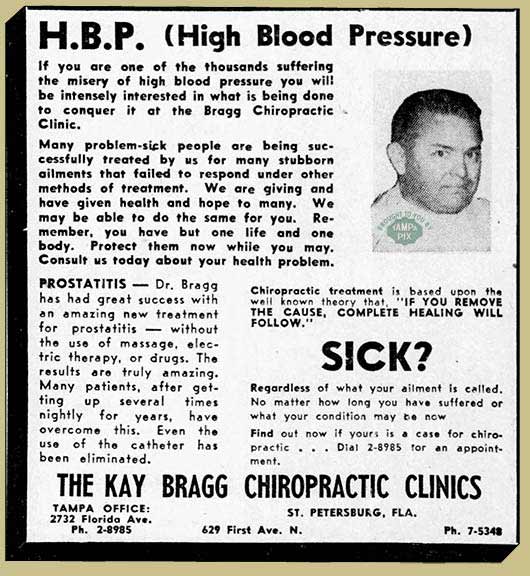
Dr. Bragg offered help and hope to thousands who suffered the misery of high blood pressure and failed to respond to other methods of treatment. "You have but one life and one body. Protect them now while you may." He also offered an "amazing new treatment for prostatitis--without the use of massage, electric therapy, drugs--or even the use of the catheter." Find out now if yours is a case for chiropractic. |
|
1954-Aug. 28: BRAGG CLINICS
INCREASE IN POPULARITY The Tampa clinic was managed by Dr. Kay Bragg and Mrs. Bragg. Due to the clinic's popularity, the number of treatment rooms was increased and the building completely remodeled in the rear, with parking space added. Dr. Bragg appealed to the common sense of his patients with his "up front" approach: "Dr. Bragg believes in sincerity and honesty when dealing with problem-sick people and will not take a case where he knows chiropractic treatment will not aid the sufferer." The ad goes on to say that through the use of modern methods, Dr. Bragg has had great success with many stubborn cases that have not responded to other methods of treatment. The Bragg clinics offer prostatic therapy that has helped many aged men through chiropractic methods. "Disease is often caused by misaligned vertebrae in the spinal column. This results in the spinal nerves being pinched and cuts down on the nerve supply to some organs...when this happens, the organs have to work under a handicap and often disease and ill health are the result." |
|
|
|
1954-Sept. 19: BRAGG'S DAUGHTERS IN THE NEWS Oris & Carmon Bragg's youngest daughter, Margaret Ann (13), and one of their twin daughters, Nina Kay (15), are two of three students honored as Pepsi-Cola Merit Award recipients. Ann attended Memorial Jr. High and Kay attended the Sacred Heart Academy. Notice the portraits are by Tommy Eure.
|
|
1954-Sept. 25 & Oct. 16 |
||
| Dr. Bragg teamed up with another graduate of the Palmer School--Dr. Platteborze, who specialized in the use of "analytical instruments to detect the malfunctioning of the heart." Dr. Platteborze also was qualified to treat patients who had failed to respond to other forms of treatment, by using a high-frequency ultrasound to "massage the molecules of human flesh." He also reported the addition of several new treatment rooms in which to use the new equipment. | ||
|
|
||
|
|
|
|
|
Robert enlisted in the Army in Nov. of 1942 while living in Sharon City. According to his enlistment record, he was already married, had 2 years of high school, and his occupation was semiskilled chainman, rodman, axman; in surveying. Private in the Air Corps, Enlisted Reserve or Medical Administrative Corps (MAC) 20 Feb 1943 Term of Enlistment: Enlistment for the duration of the War or other emergency, plus six months, subject to the discretion of the President or otherwise according to law. Event Place: Miami Beach, Florida, United States.
(Miami Beach, "the most beautiful boot camp in America," where one fourth of the officers and one fifth of the enlisted men of the entire Army Air forces were trained.) See Miami Beach wartime training center, Camp Miami Beach, and Miami Beach training center.
In November of 1943, Platteborze began advanced aerial navigation training at San Marcos, Texas.
Apparently his wife moved to Texas as well; their son, Wayne David Platteborze, was born Jan. 16, 1945, in Ward, Texas. Mother: Doris P. Wolfinger Platteborze. According to the Bragg ad, and the ads below, Platteborze graduated from Palmer School in Davenport. The one on the left below appeared in the Times quite regularly but with different messages.
Robert divorced Ethel Platteborze on Sept. 21, 1979 in Pinellas Co. Robert then remarried on Nov. 18, 1989 in Pinellas County. He was age 65. Robert and Doris's son, Wayne D. Platteborze, married and divorced no less than 4 times, two times was with the same wife. |
||
|
1955-Mid-September: DR. BRAGG MOVED
HIS CLINIC FROM FLORIDA AVE. TO GRAND CENTRAL AVE. These ads below appeared repeatedly in the Times and the Tribune throughout the year. The clinic address shows that in mid-September, Bragg moved to 2124 Grand Central Avenue but didn't make any announcement at this point. |
||||
|
|
|
|||
|
Today, Grand Central is named Kennedy Blvd. Place your cursor on the photo to see the area in present times. The brick structure on the right which housed an upholstery shop is still present today as Encore Broadcast Solutions. The two wood frame dwellings on the left became the location of Bragg's new clinic. Sanborn Fire Insurance map from the Univ. of Florida digital maps collection.
Today, a few businesses are located here at 2124 W. Kennedy Blvd. It is not without possibility that the building there today is the same one that housed Bragg's clinic, but with significant modifications. |
||||
|
CONTINUED ON
NEXT PAGE
 |
Safety Village / Children's Museum / Kids City
Dr. Bragg's Fantasia Golf Page 1 Page 2 Bragg Family Tree

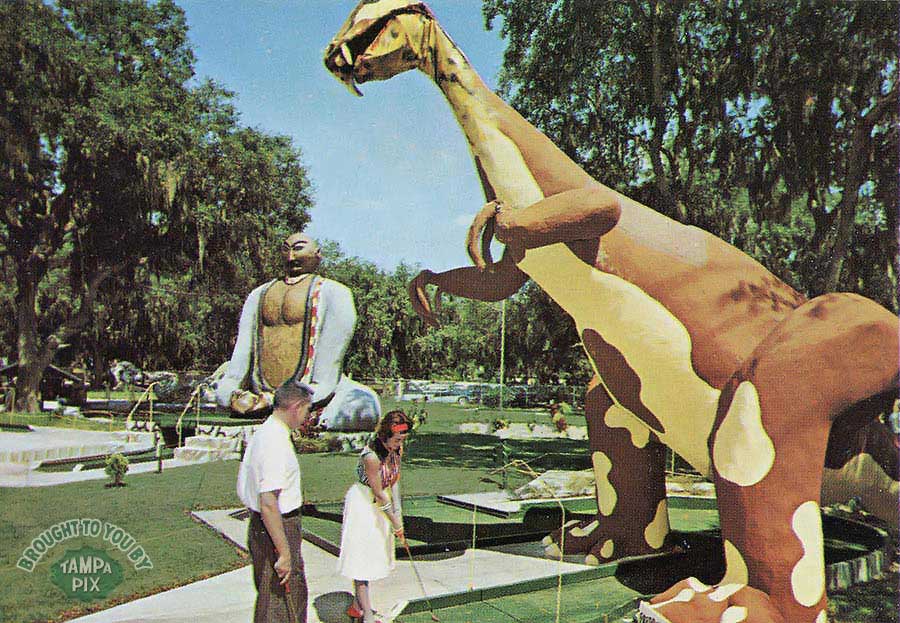


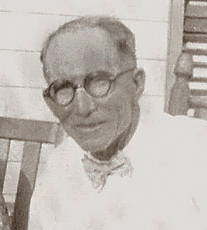 LUTZ, FL
LUTZ, FL
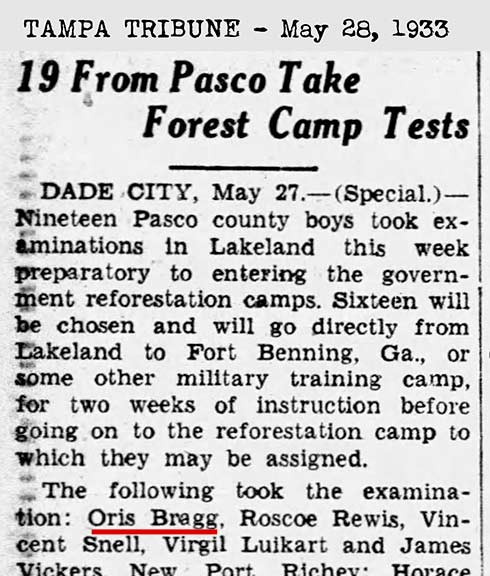
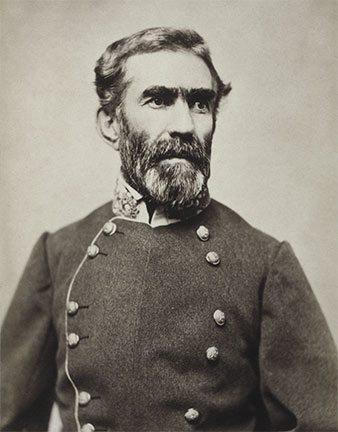
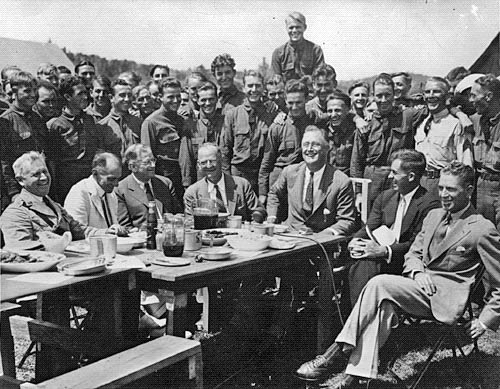 THE
GREAT DEPRESSION
THE
GREAT DEPRESSION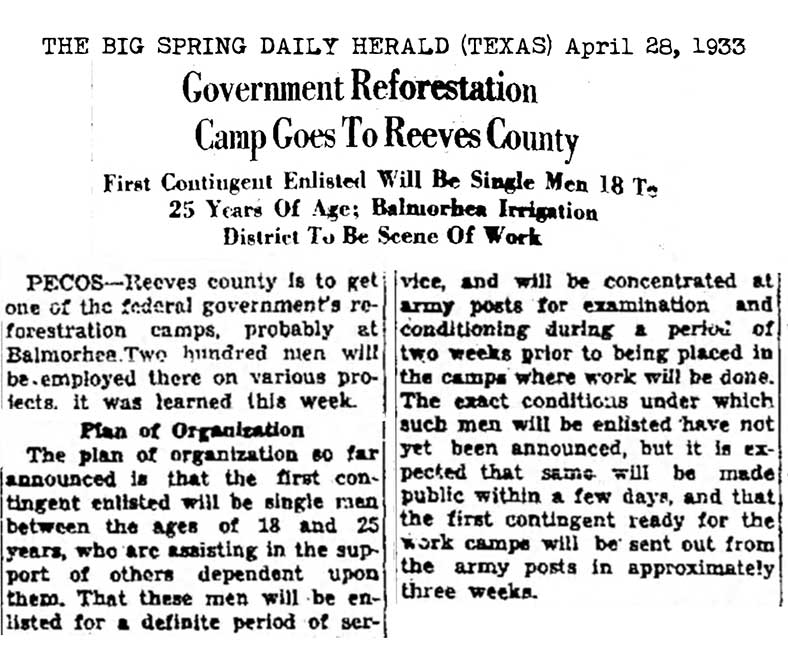 At
that time, it was the fastest large-scale mobilization of men
(including World War I) in U.S. history.
At
that time, it was the fastest large-scale mobilization of men
(including World War I) in U.S. history.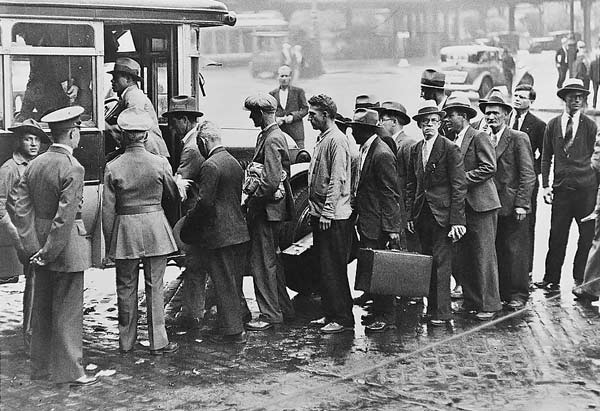
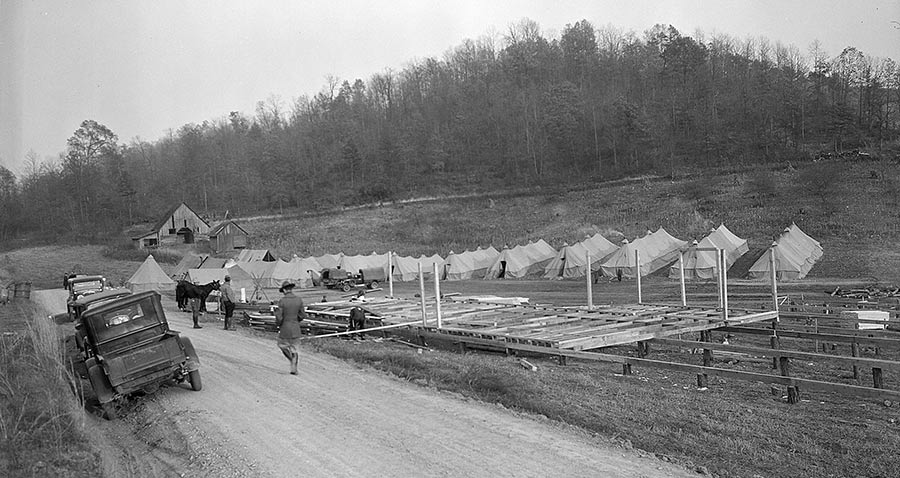
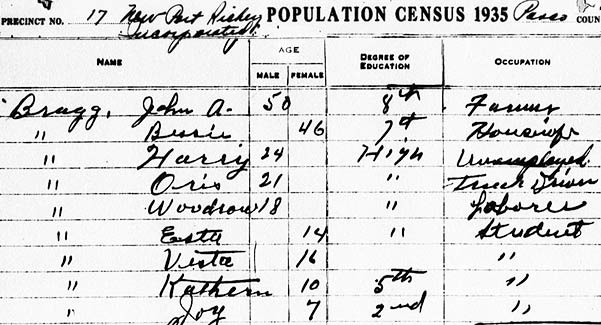 By
the time of the 1935 Census, which was probably in June, 1935,
Oris was back from San Antonio and living in New Port Richey
with his family.
By
the time of the 1935 Census, which was probably in June, 1935,
Oris was back from San Antonio and living in New Port Richey
with his family.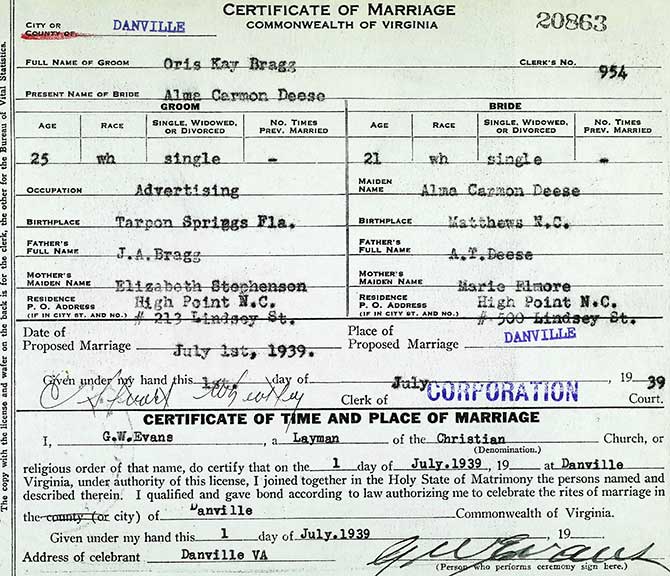
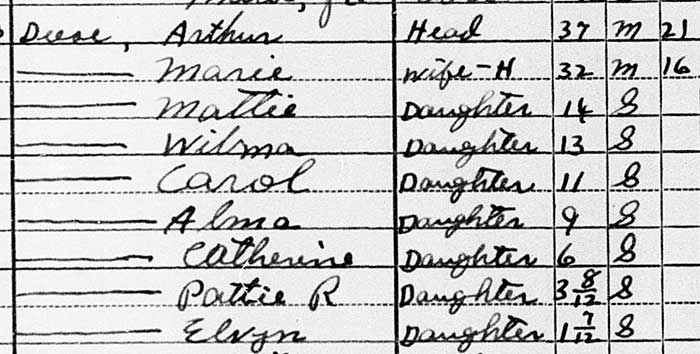
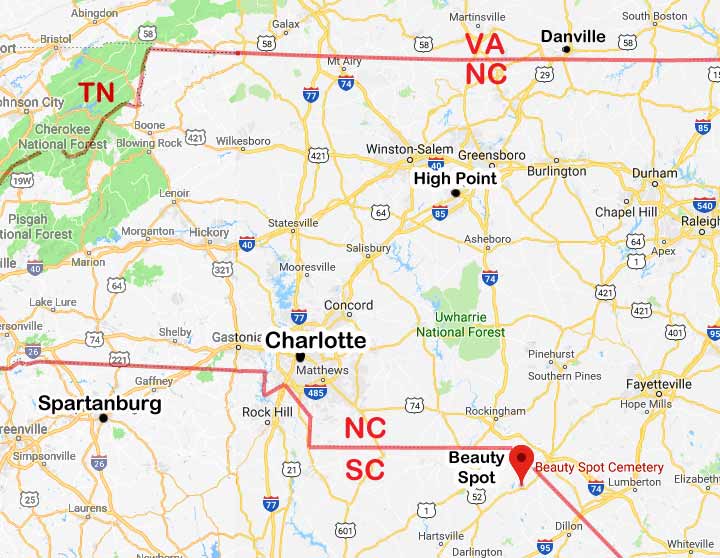

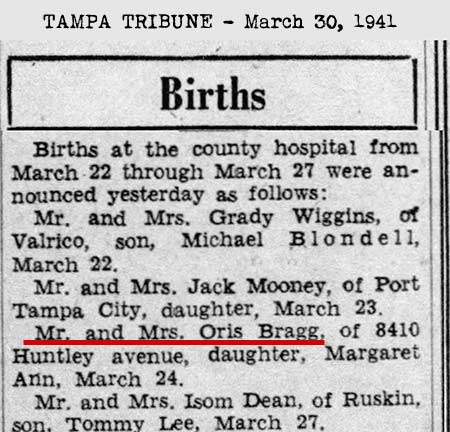
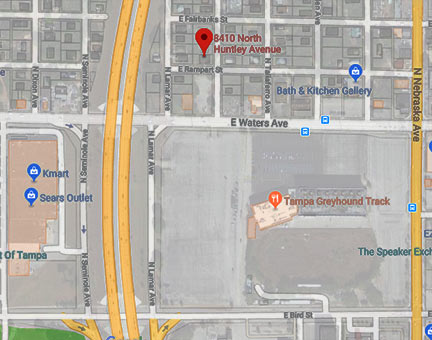
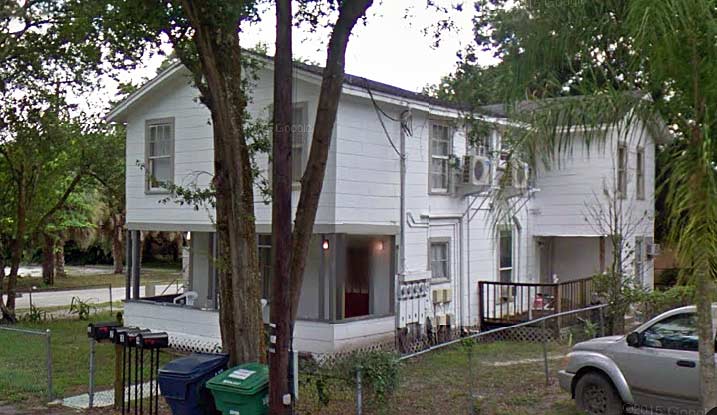
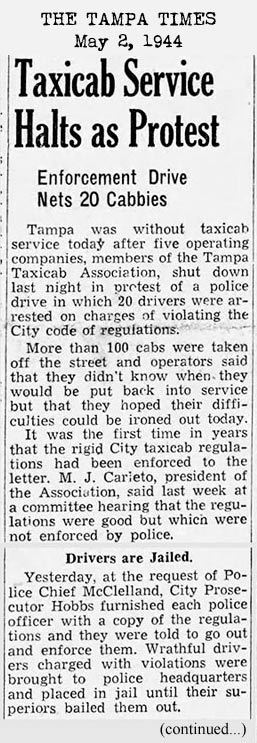
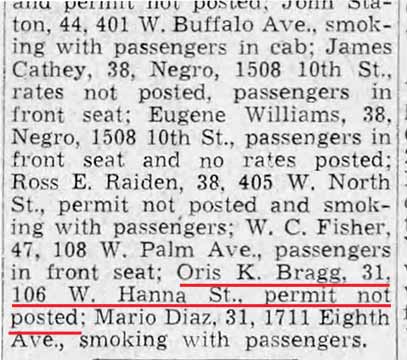 1944-May 2: Thirty-one year old Bragg was working as a cab driver
in Tampa when he was one of twenty drivers arrested due to the city's sudden decision to start strict
enforcement of the taxi laws. Bragg was charged with not
having his permit posted. His home address was given as
106 W. Hanna, but this is an error and should be 105 W. Hanna. (
1944-May 2: Thirty-one year old Bragg was working as a cab driver
in Tampa when he was one of twenty drivers arrested due to the city's sudden decision to start strict
enforcement of the taxi laws. Bragg was charged with not
having his permit posted. His home address was given as
106 W. Hanna, but this is an error and should be 105 W. Hanna. (
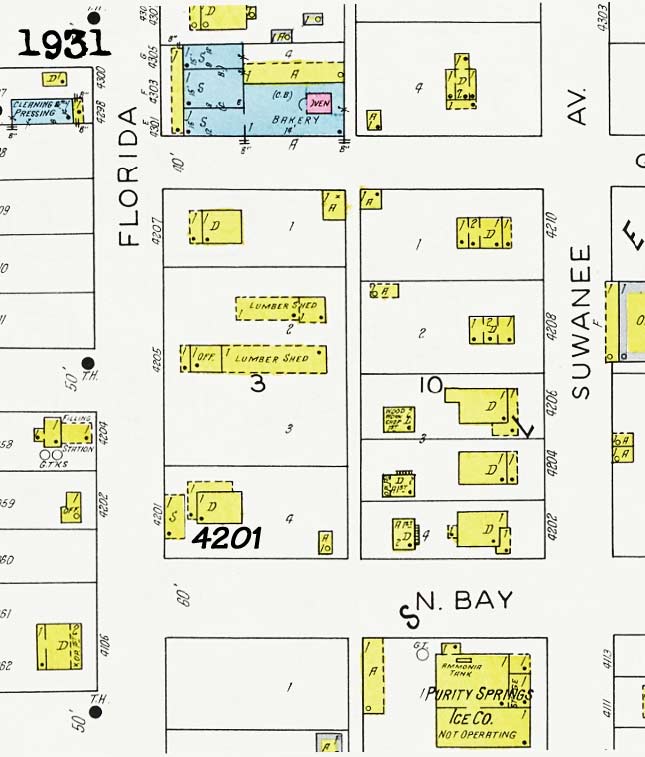
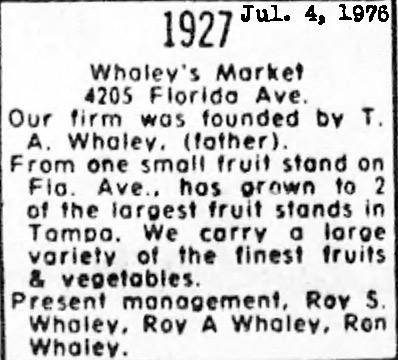 For
most of the years after Bragg, through the early 1970s, this
location of 4201 thru 4205 has been used car lots. W. F.
Mullis, who took over after Kay Bragg in the mid-1940s, was
there through mid-1952. Then Oris Bragg's brother, Jay B.
Bragg, had a successful used car business there at 4205 and a
second lot at 4116. Bragg was at 4205 through mid-Jan.
1950 at which time it became Avis Used Cars. They went out
of business in Aug. 1960 and it became Mr. G's Used Cars.
By Jan. 1961, the property was up for sale and in May 1961, W.
F. Mullis was back and gone by Feb. 1962. Superior Motors
moved in at that time and was rather successful through
mid-1969. In late 1969, Boyd & Boyd moved in. In
Aug. 1971, Boyd & Boyd shut down and the property was up for
sale in Nov. 1971. In late 1972 it was still for sale. In 1975
and 1976, this one article on a page full of founding years for
many Tampa businesses, indicates Whaley's Market was there, but
no Whaley's business ads for those years could be found for this
location.
For
most of the years after Bragg, through the early 1970s, this
location of 4201 thru 4205 has been used car lots. W. F.
Mullis, who took over after Kay Bragg in the mid-1940s, was
there through mid-1952. Then Oris Bragg's brother, Jay B.
Bragg, had a successful used car business there at 4205 and a
second lot at 4116. Bragg was at 4205 through mid-Jan.
1950 at which time it became Avis Used Cars. They went out
of business in Aug. 1960 and it became Mr. G's Used Cars.
By Jan. 1961, the property was up for sale and in May 1961, W.
F. Mullis was back and gone by Feb. 1962. Superior Motors
moved in at that time and was rather successful through
mid-1969. In late 1969, Boyd & Boyd moved in. In
Aug. 1971, Boyd & Boyd shut down and the property was up for
sale in Nov. 1971. In late 1972 it was still for sale. In 1975
and 1976, this one article on a page full of founding years for
many Tampa businesses, indicates Whaley's Market was there, but
no Whaley's business ads for those years could be found for this
location. 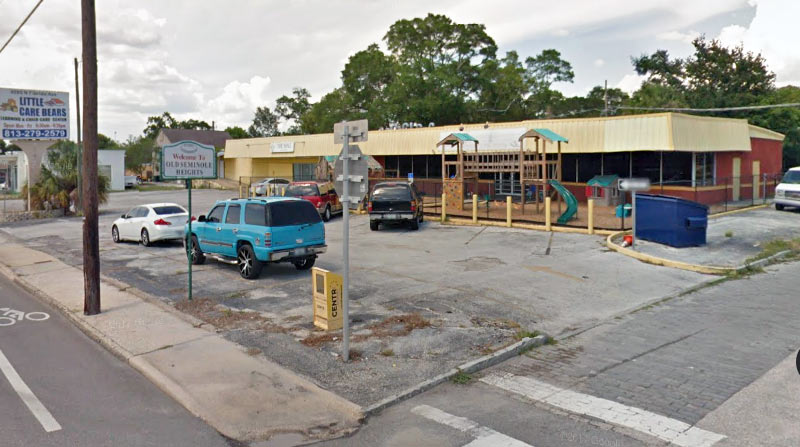
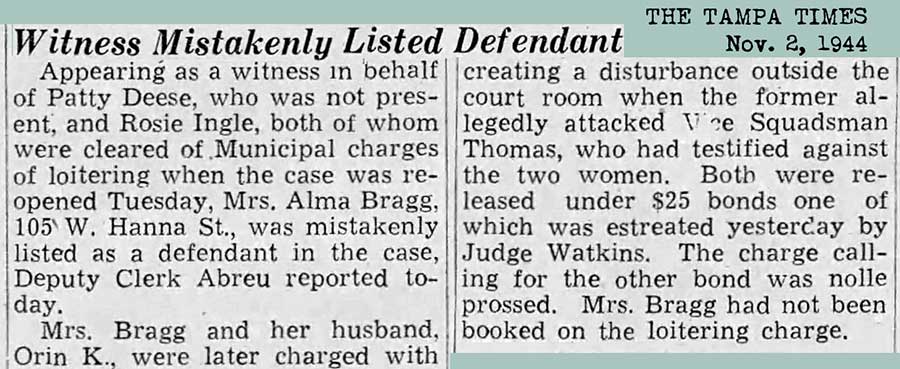

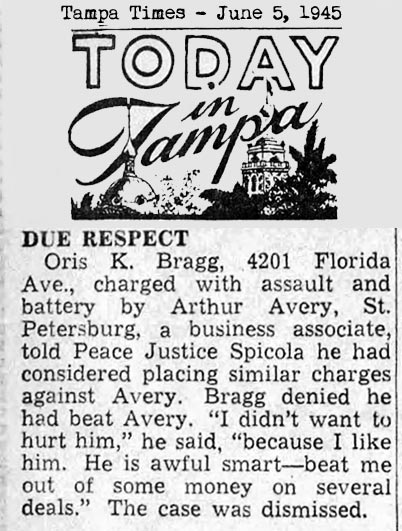
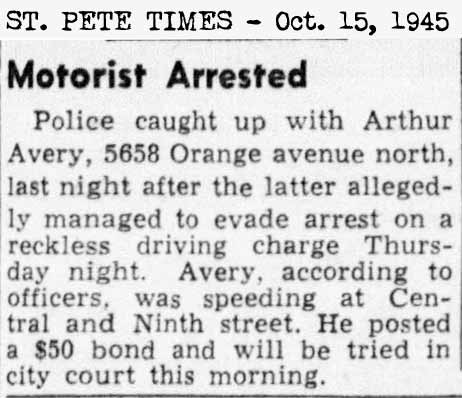
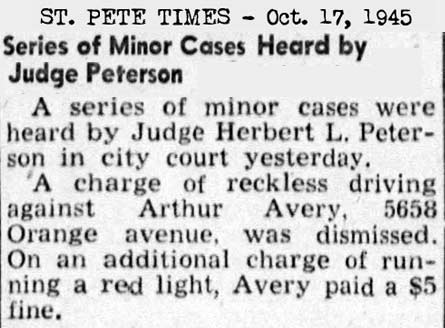
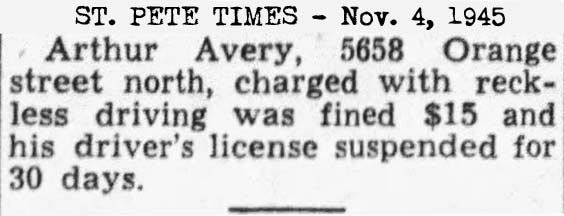


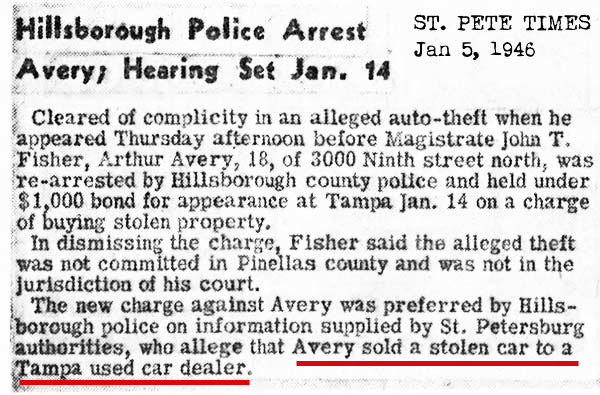
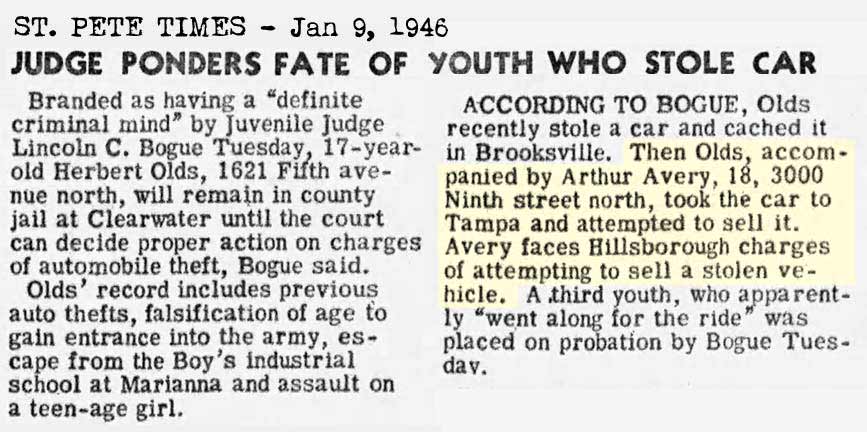

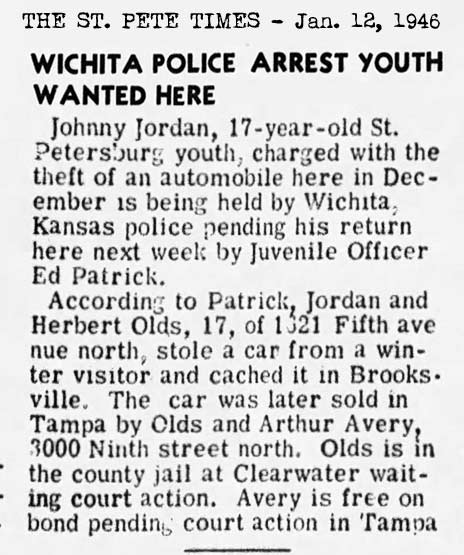
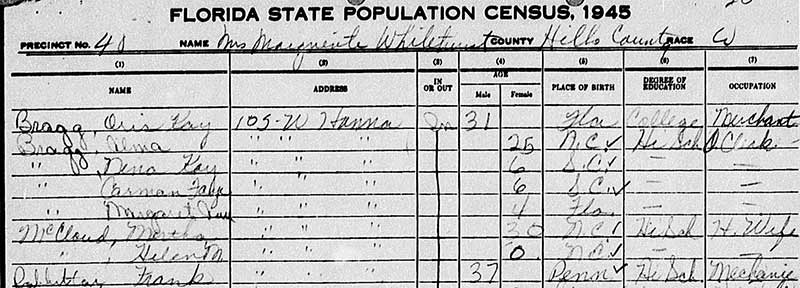
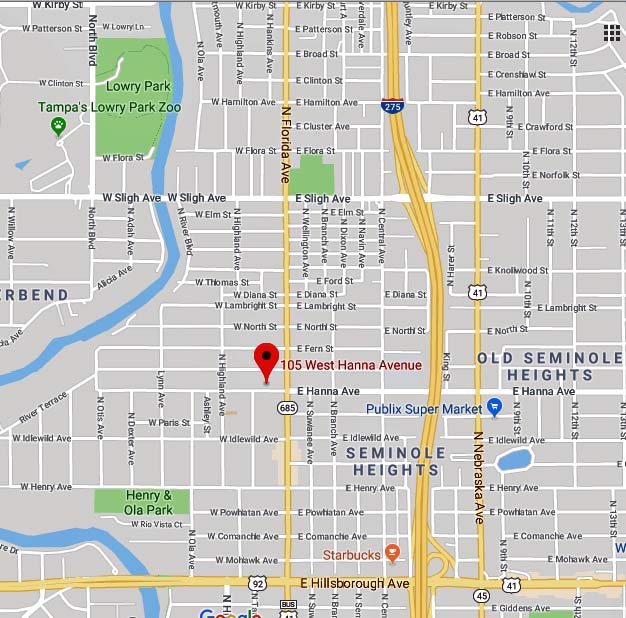
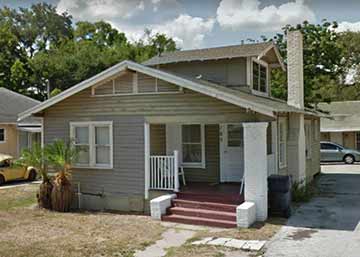
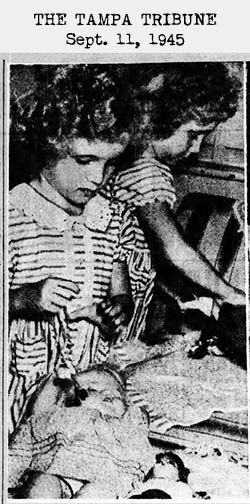


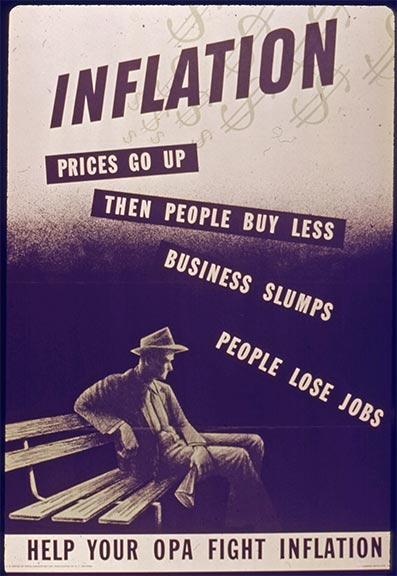
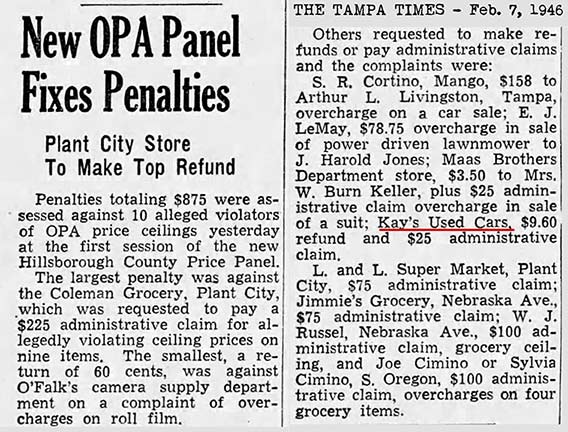
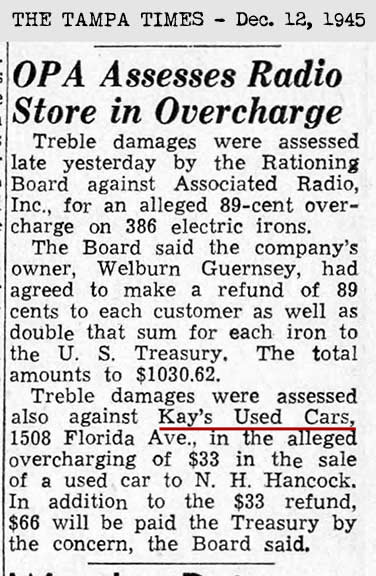
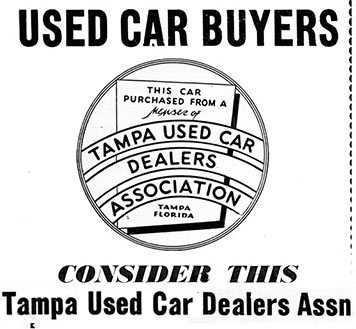
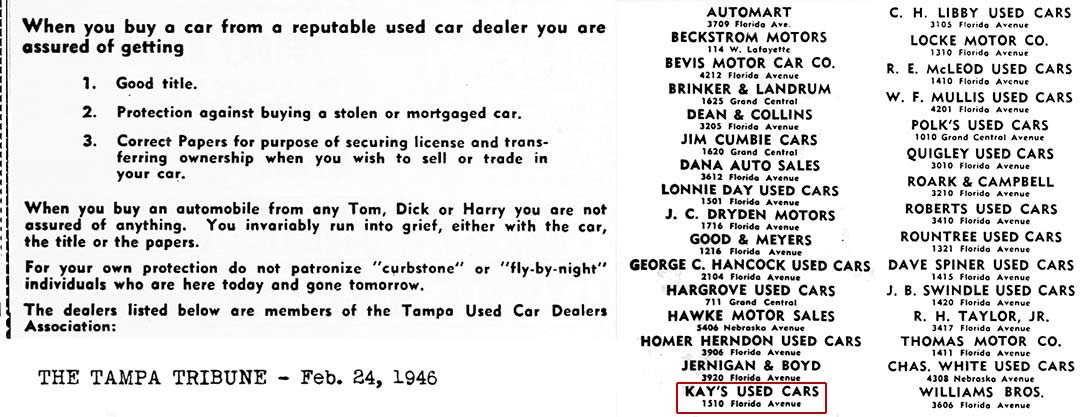
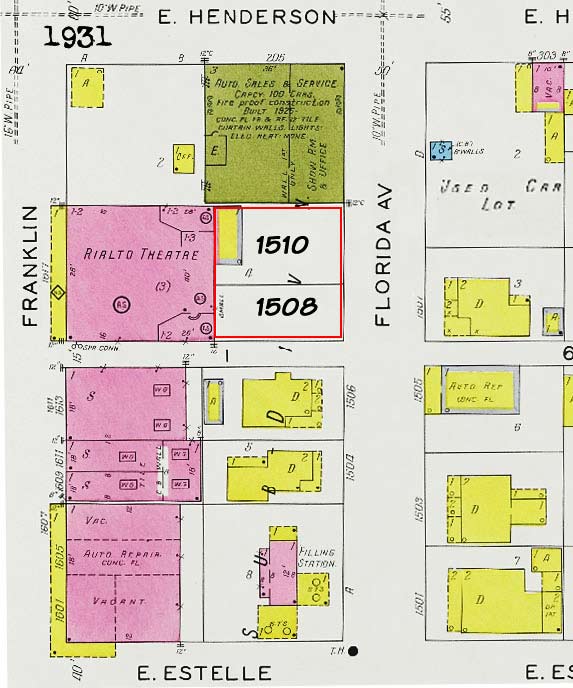 LOCATION OF KAY'S USED CARS
LOCATION OF KAY'S USED CARS 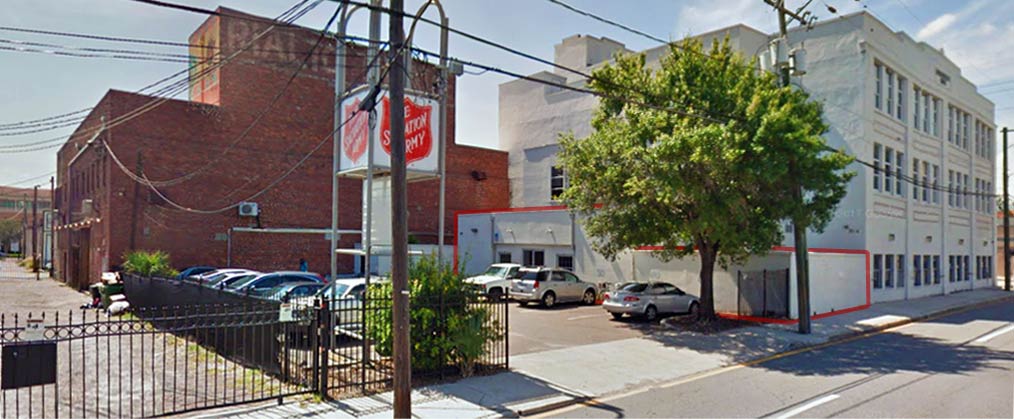
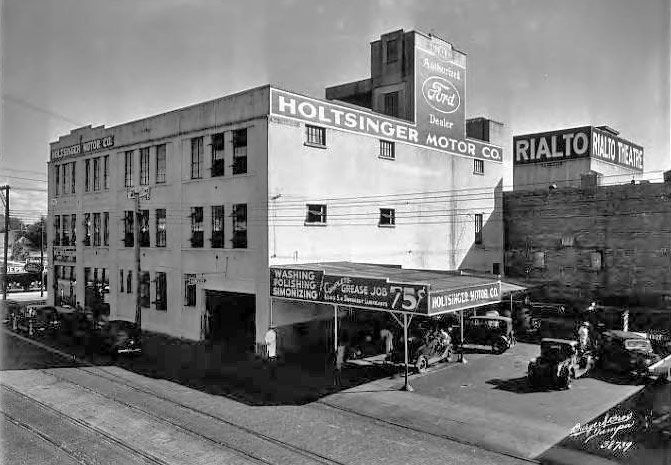
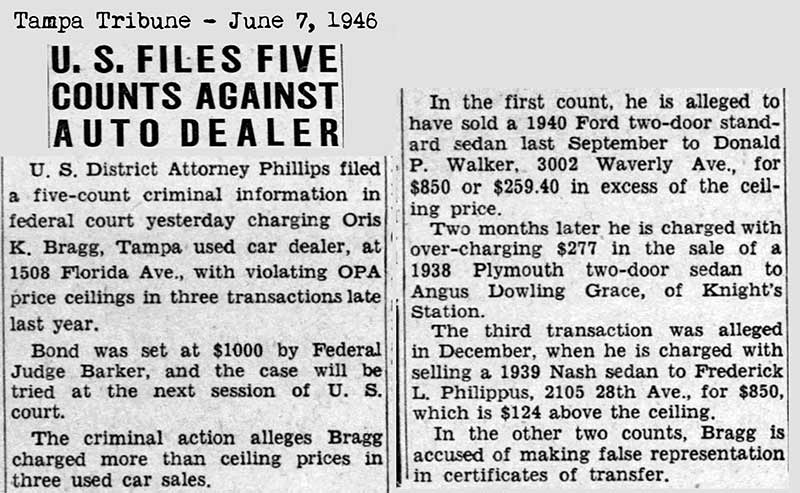

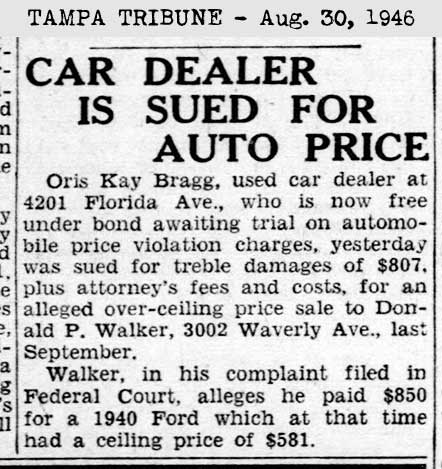
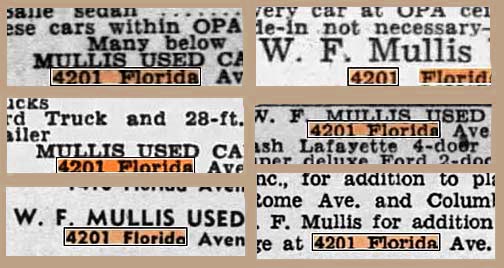
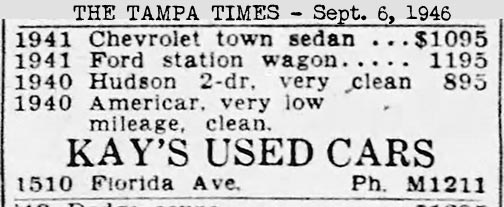
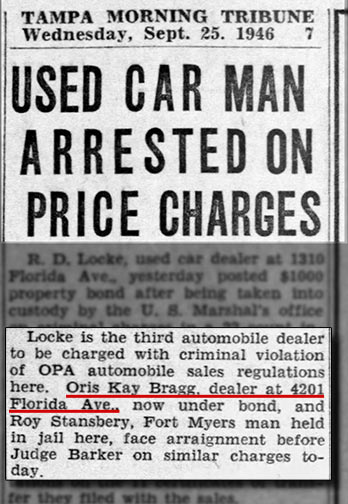
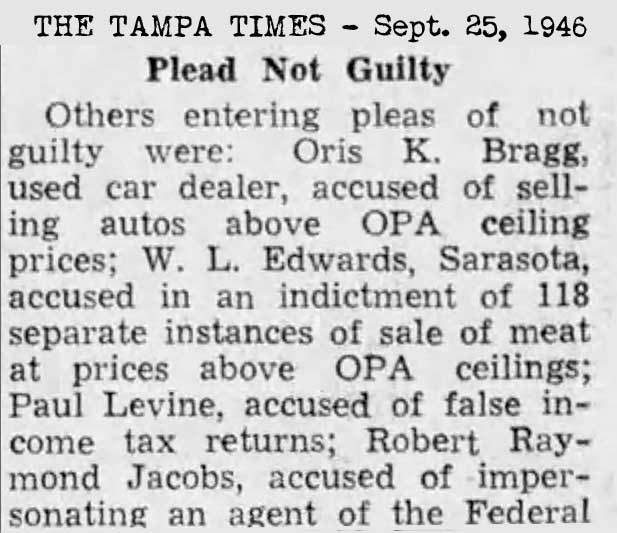
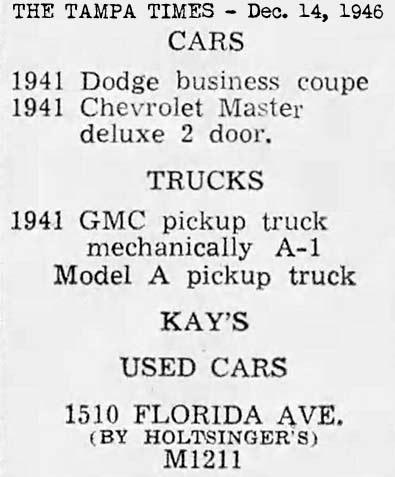
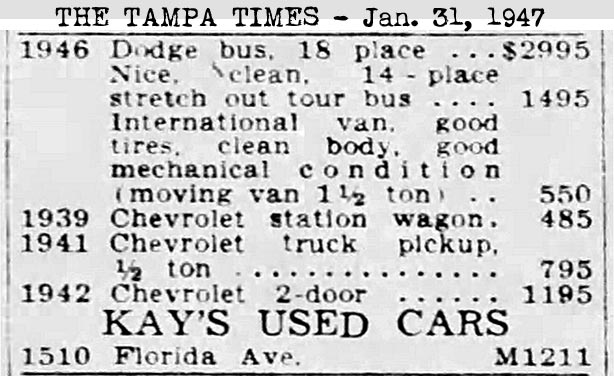
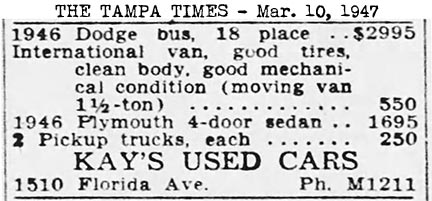
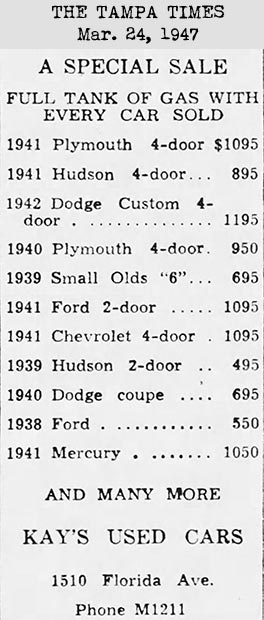
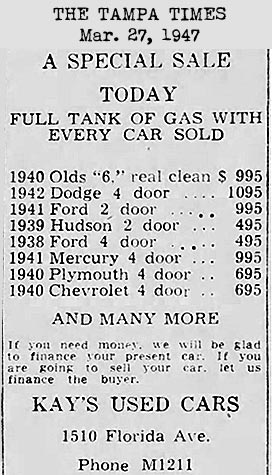
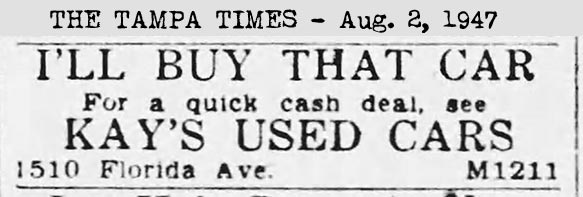
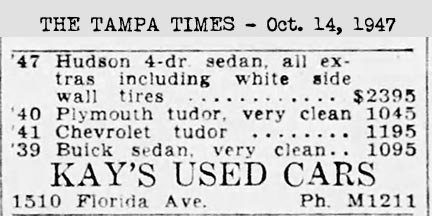
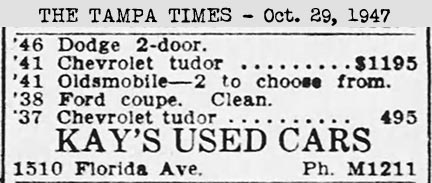

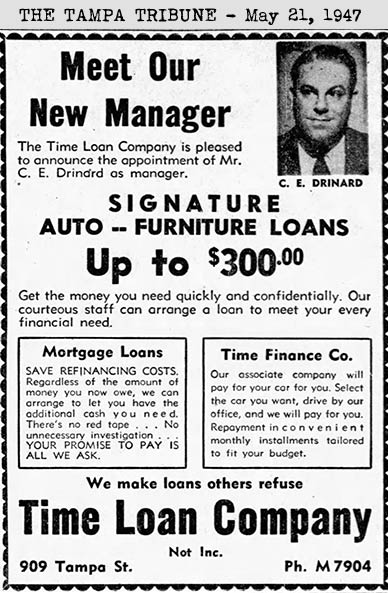
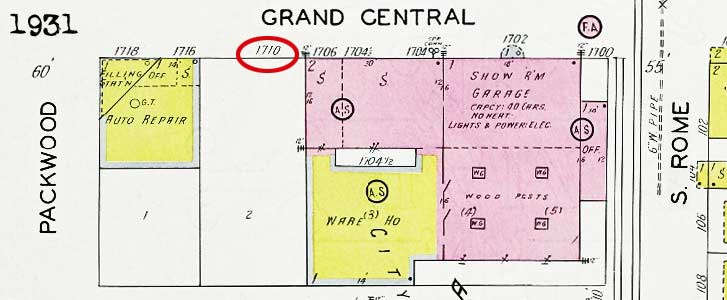
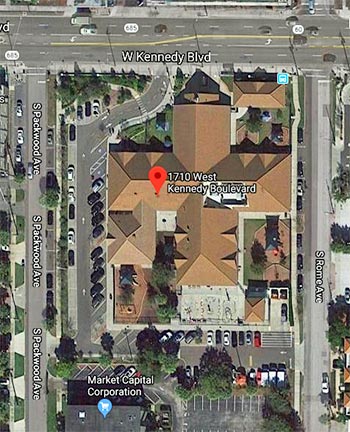
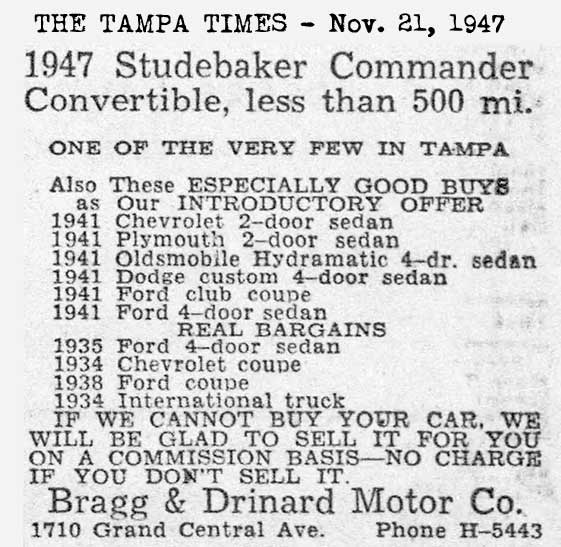
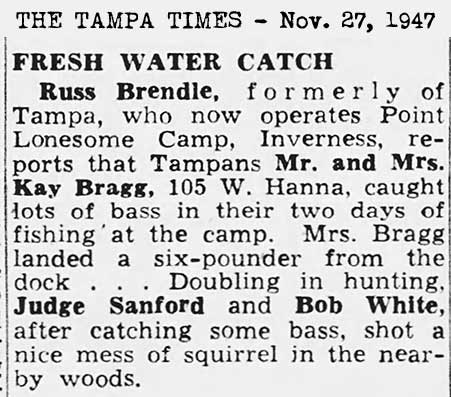
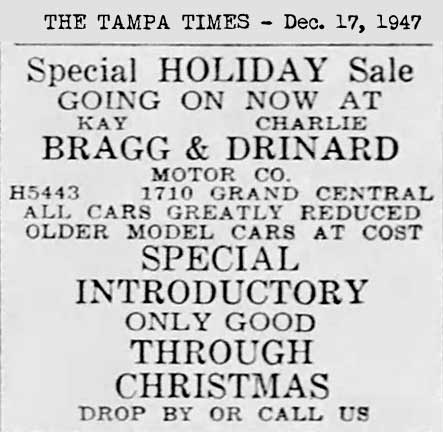
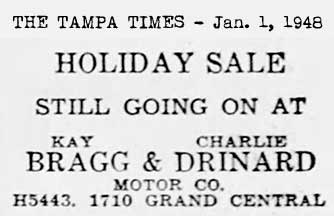
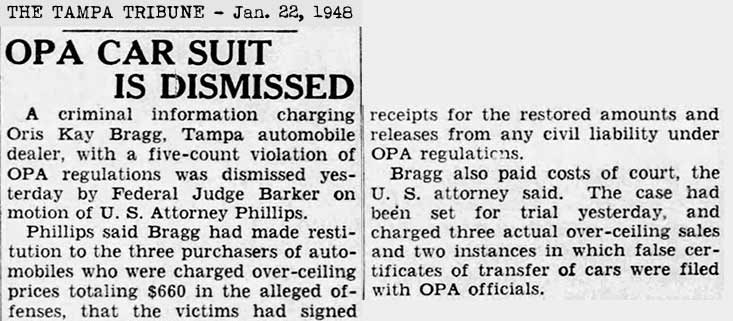
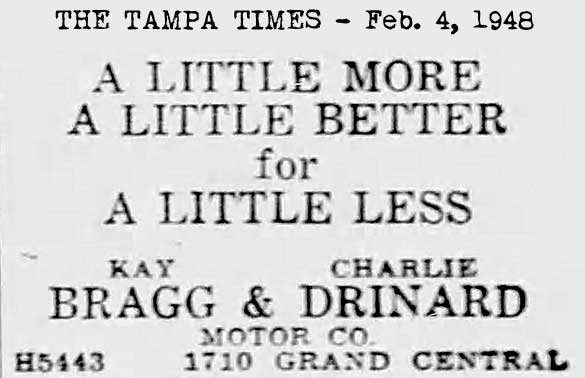

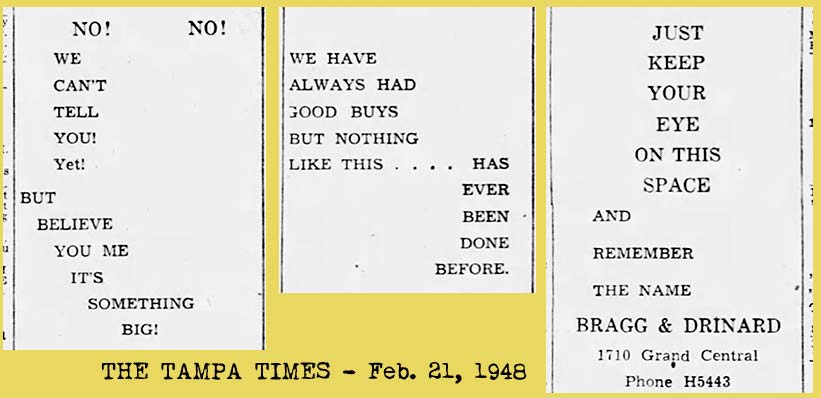
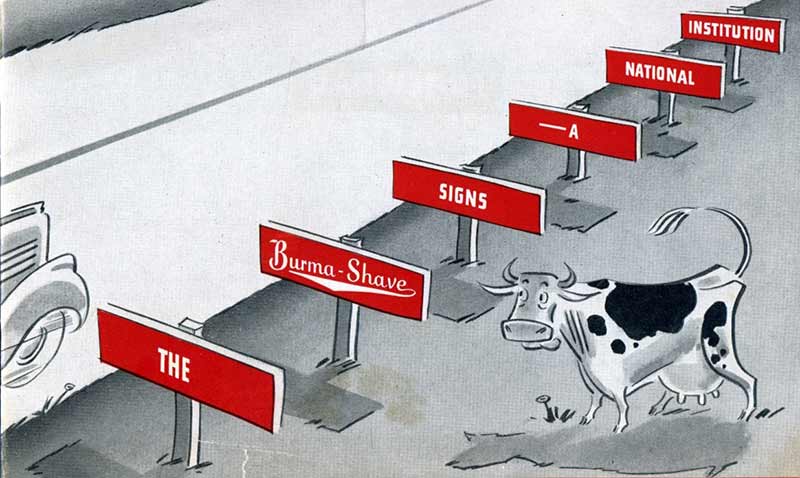
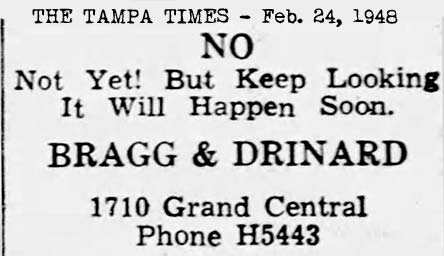

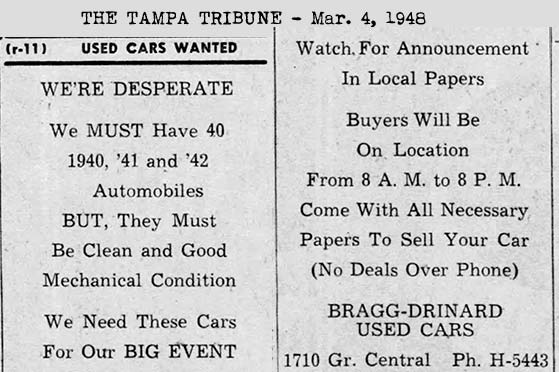
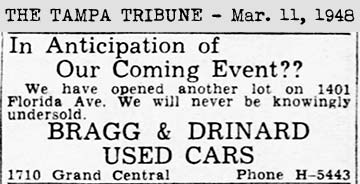
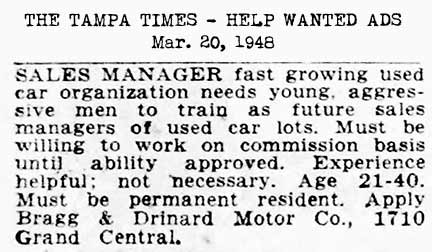

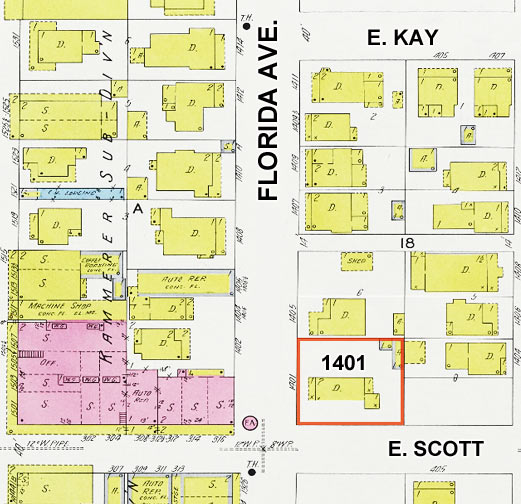
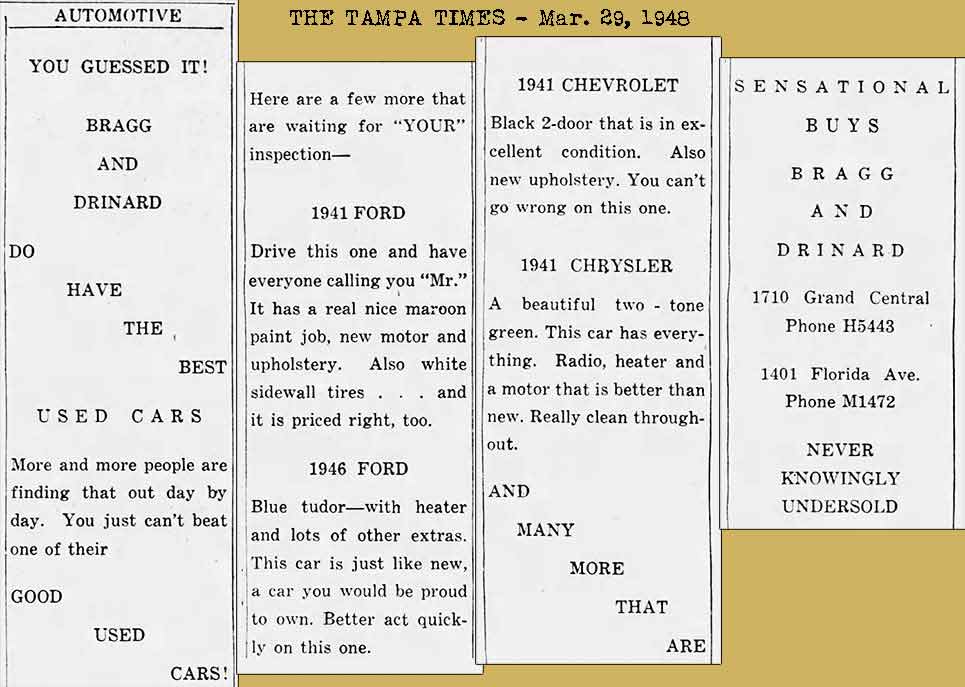
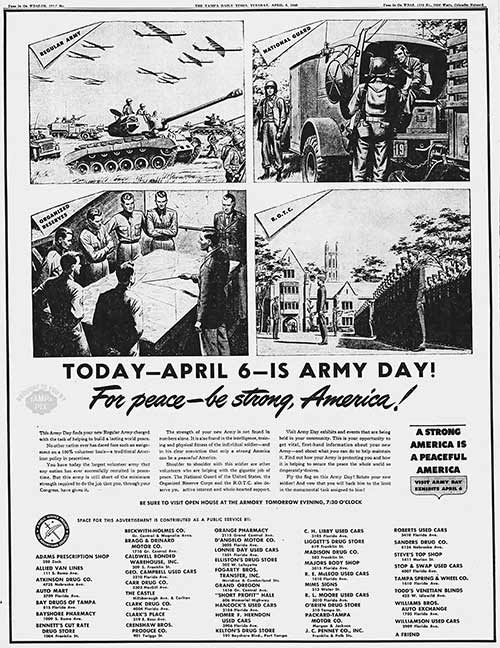
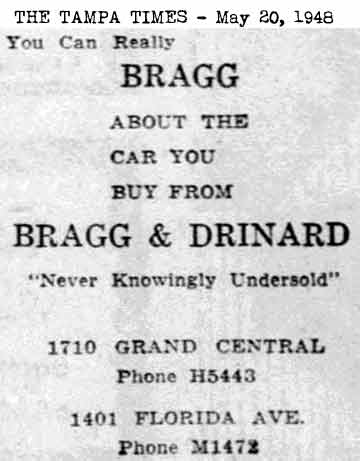
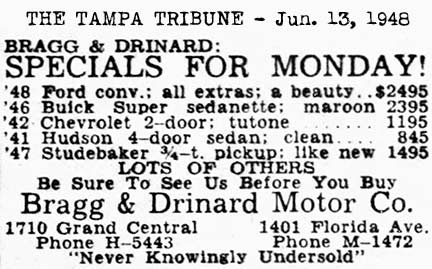
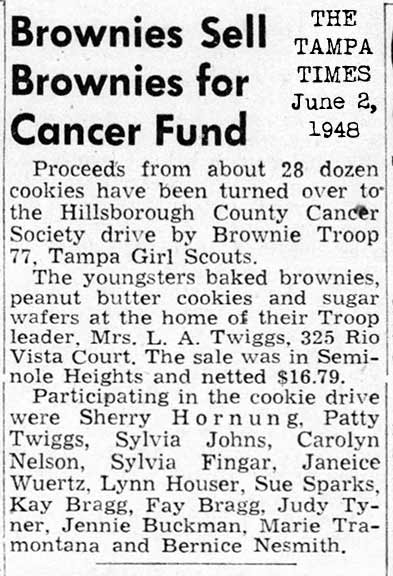
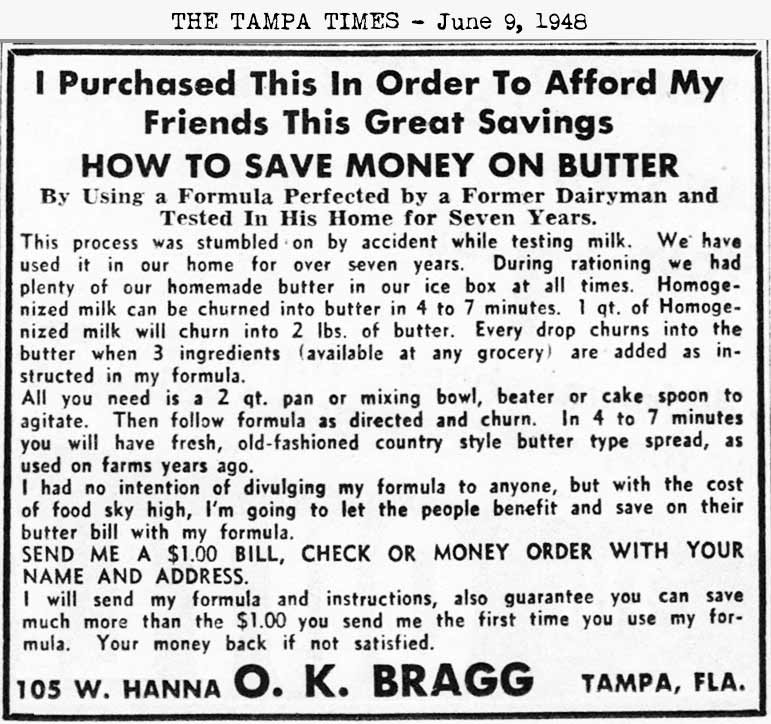
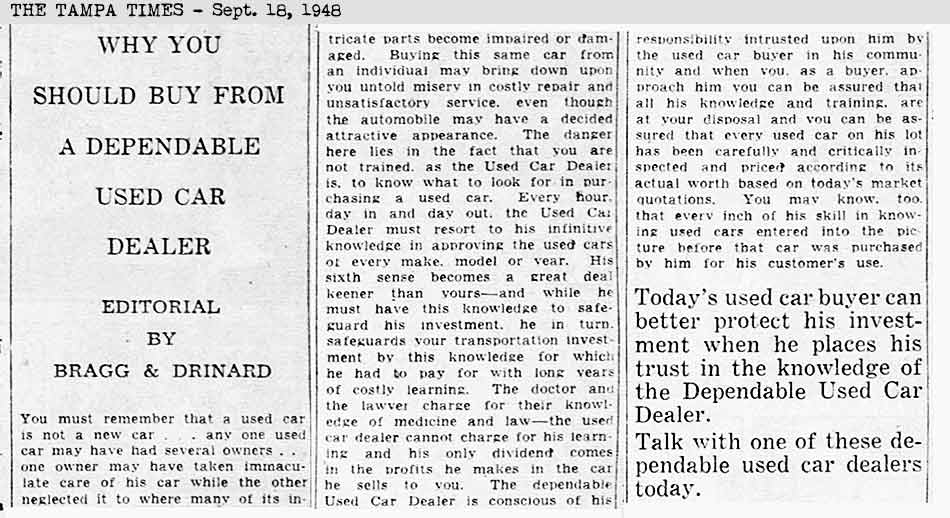
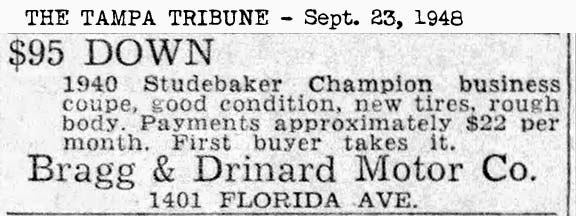


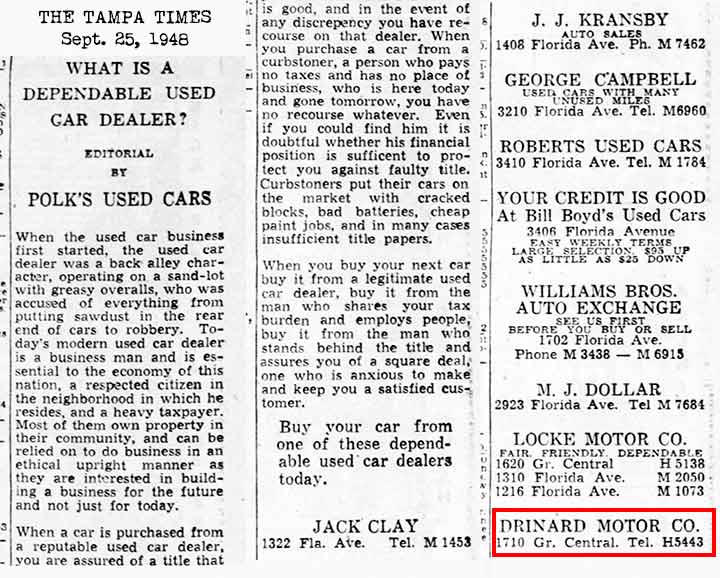
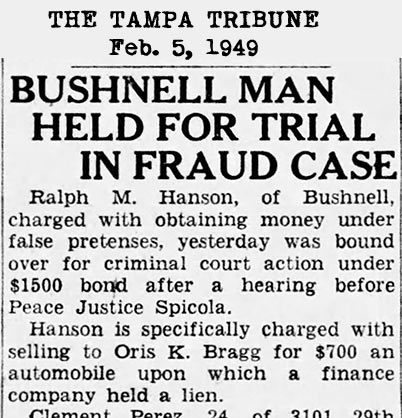



















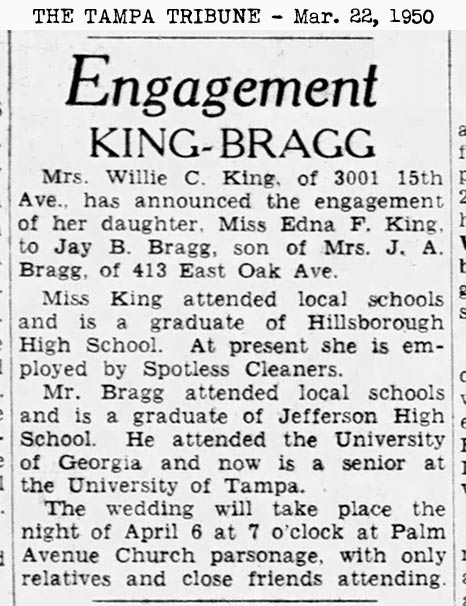 In
May of 1949, Oris's brother Jay B. Bragg entered the used car lot
business.
In
May of 1949, Oris's brother Jay B. Bragg entered the used car lot
business.
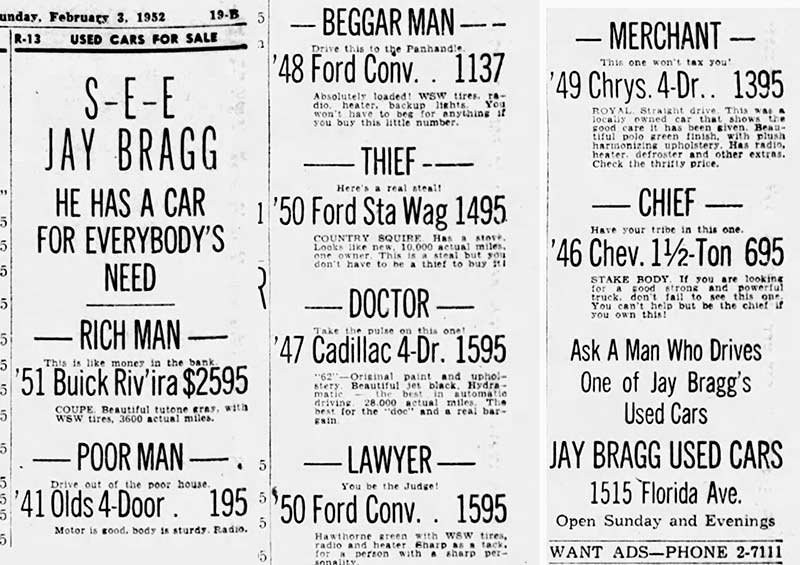
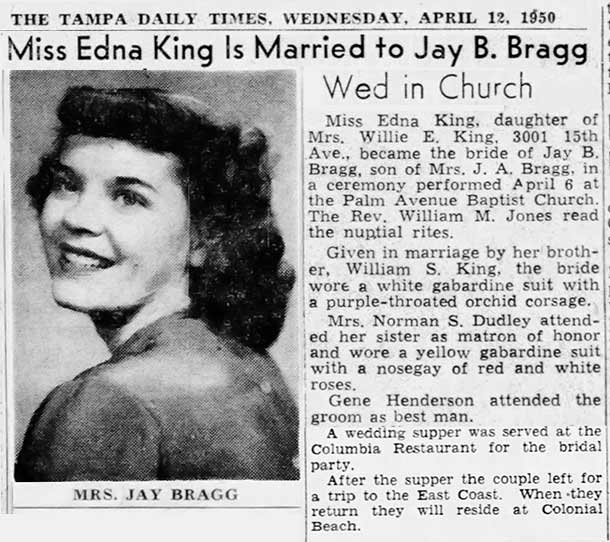

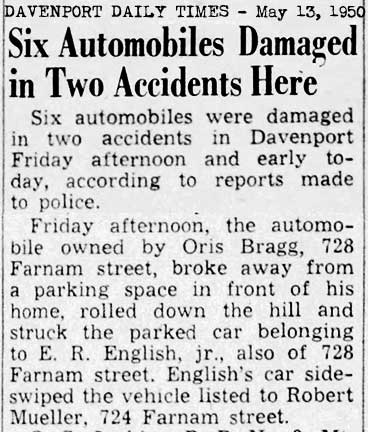
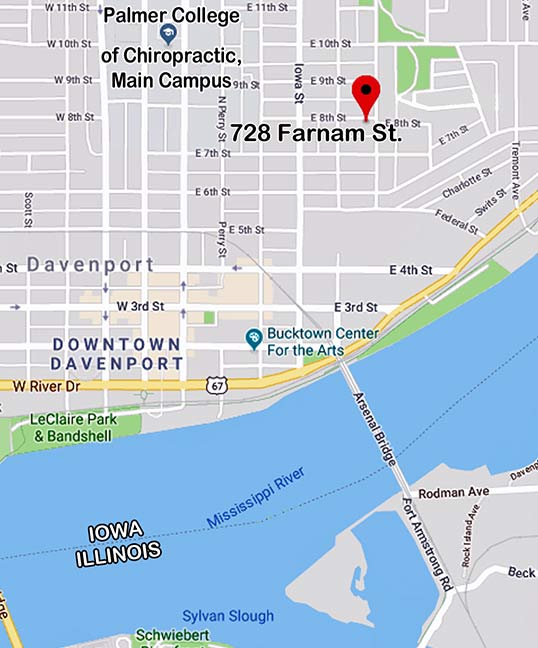
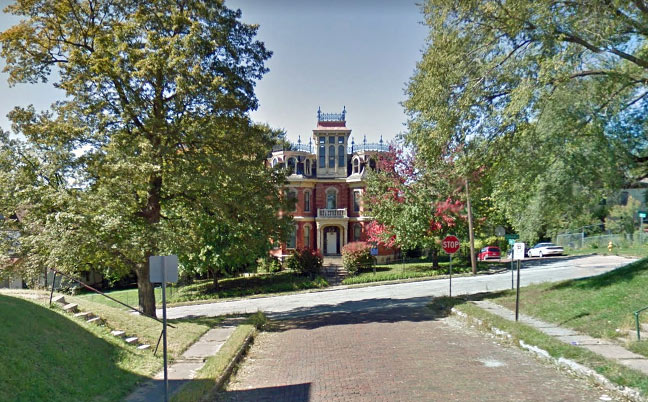
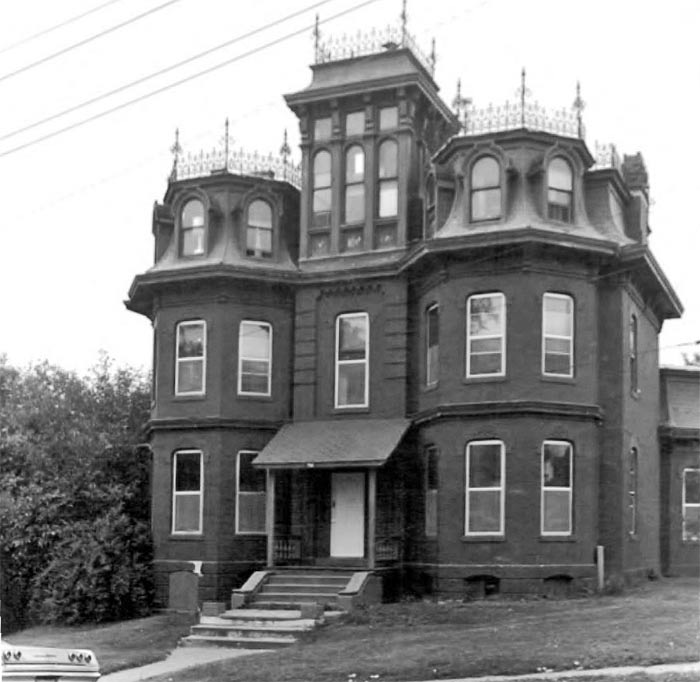
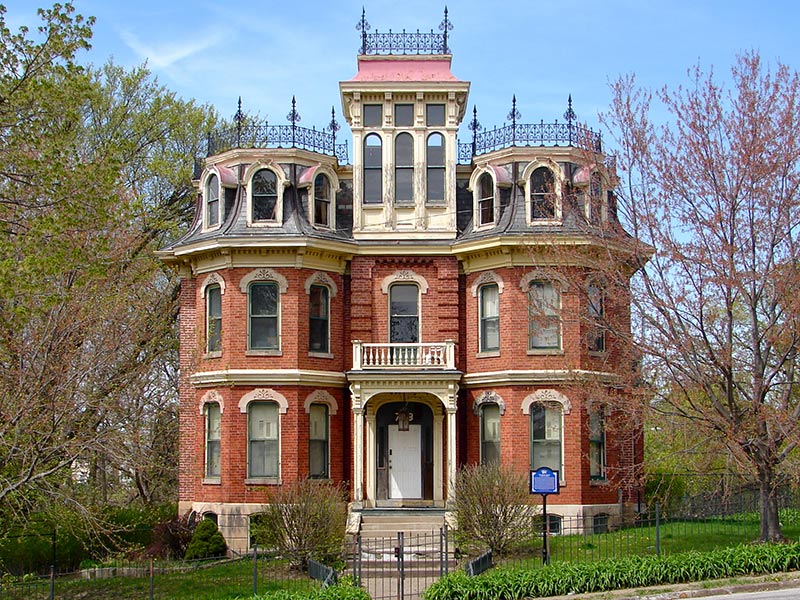
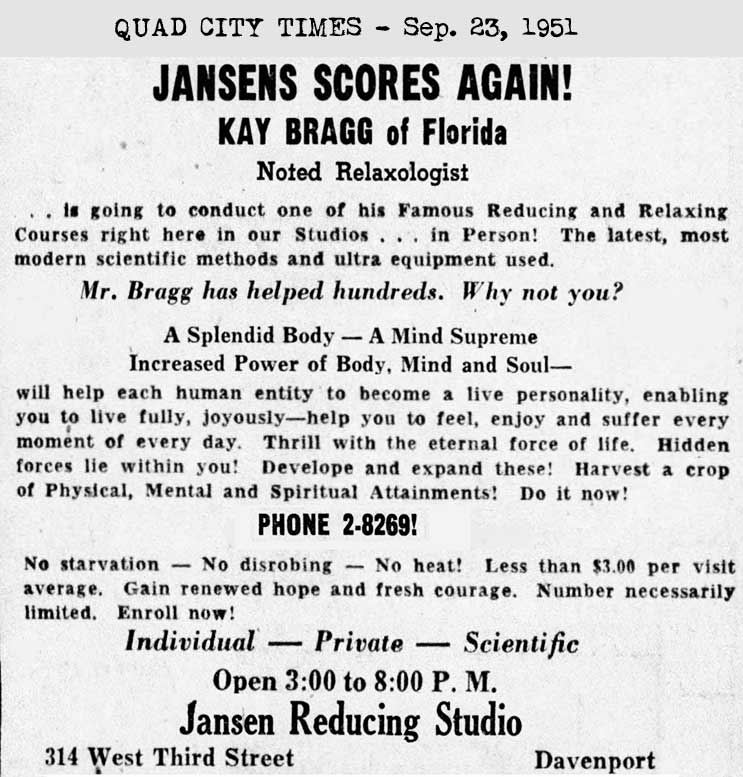
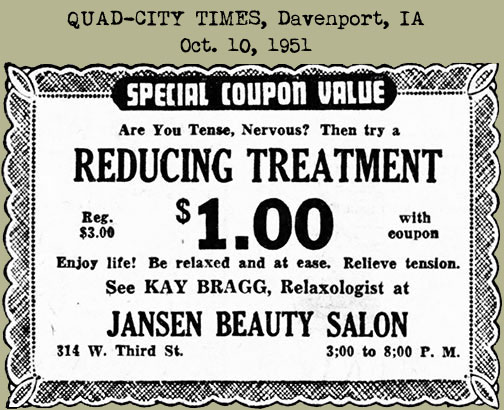
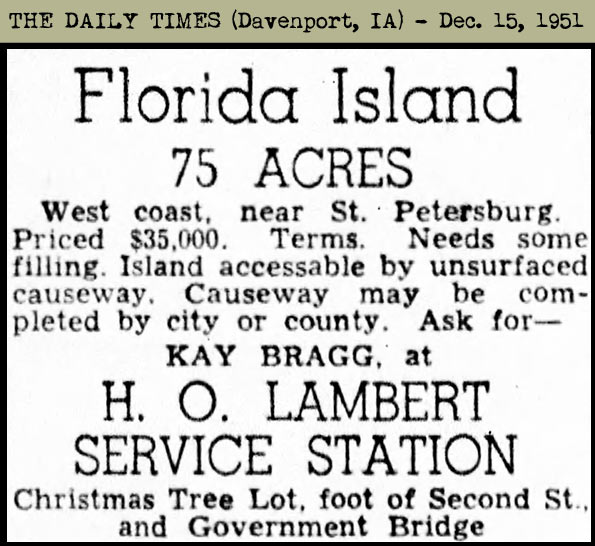

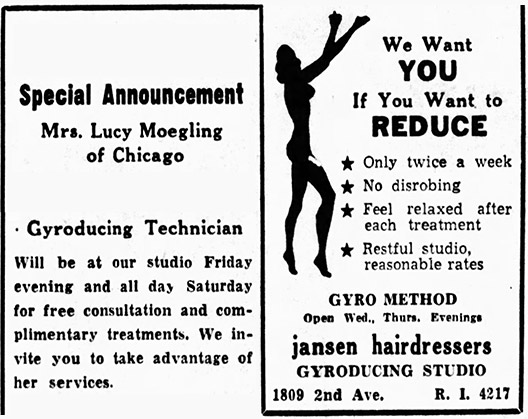
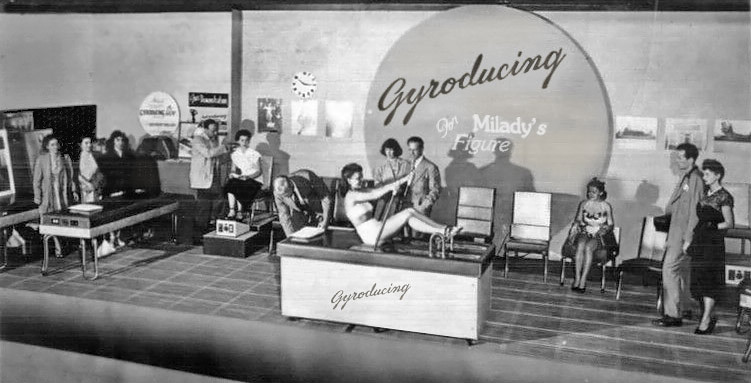
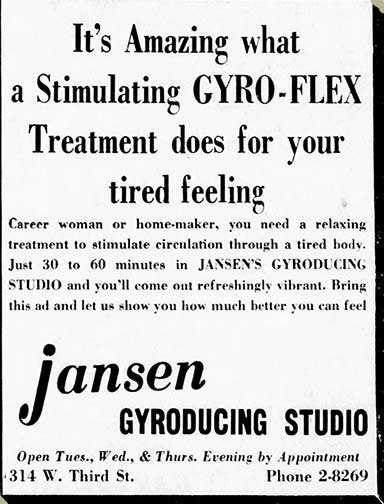
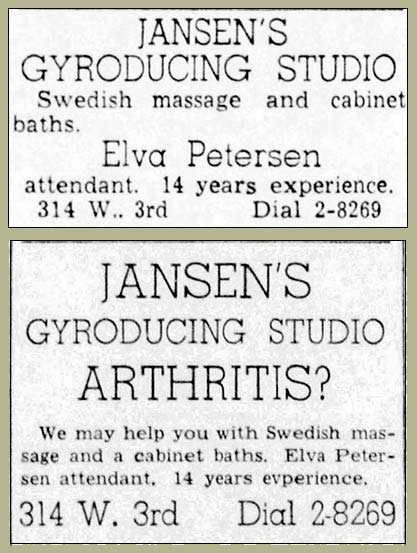
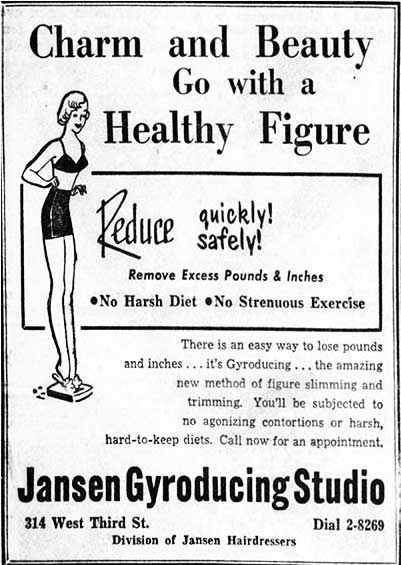
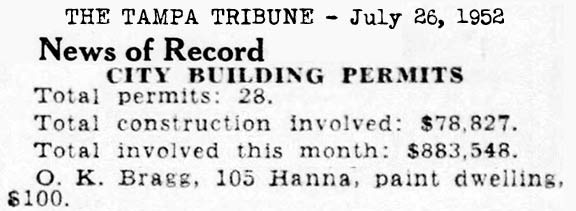
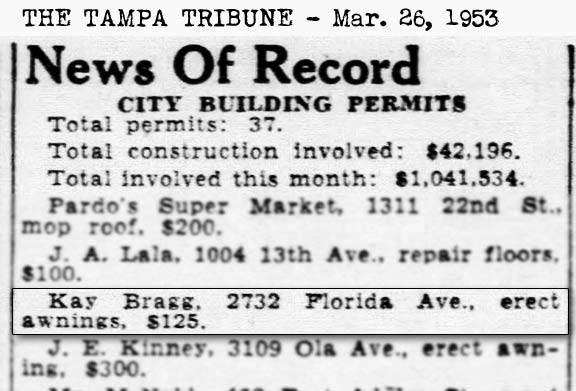
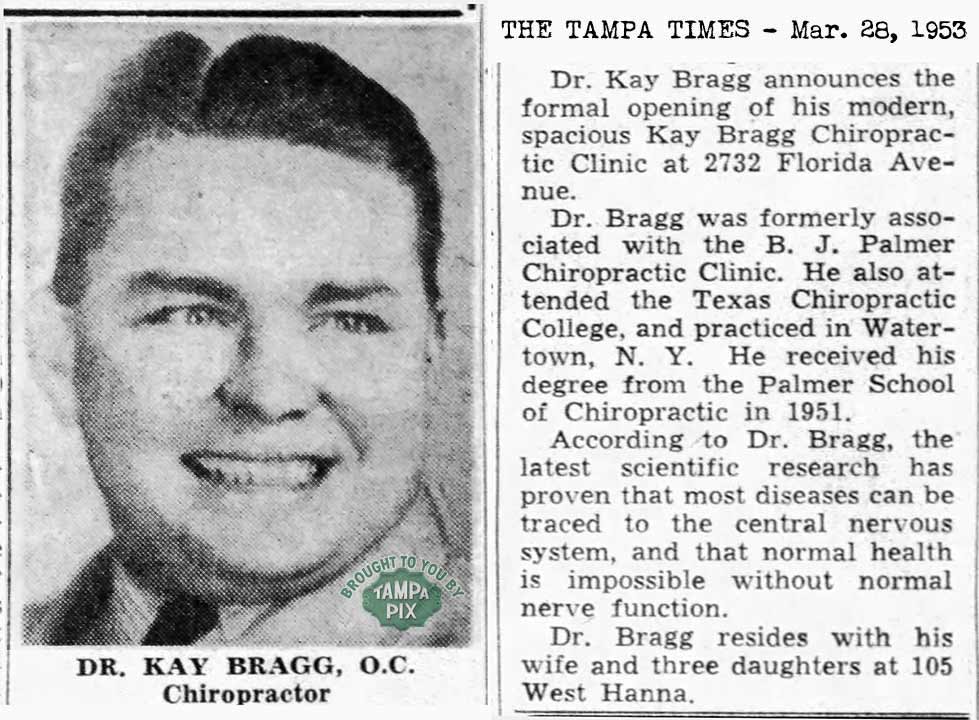
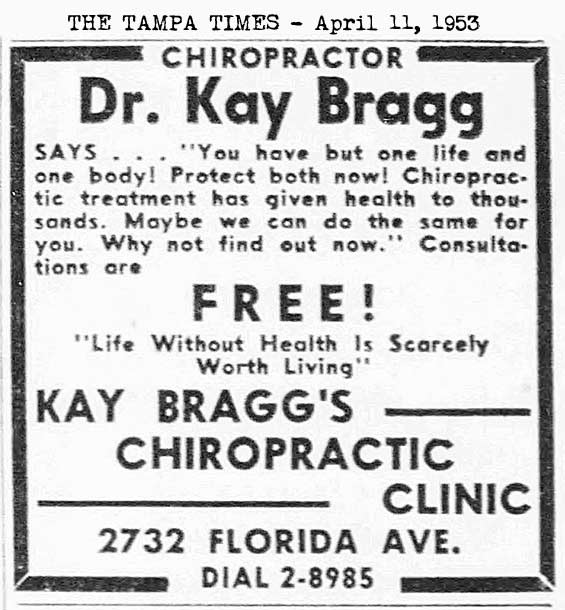
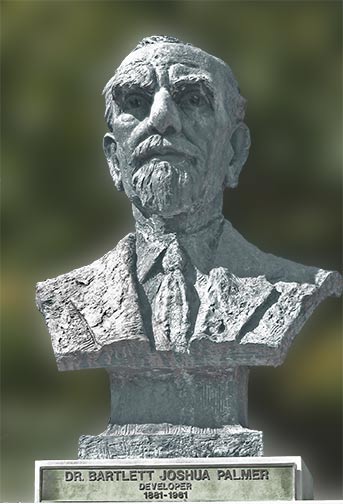
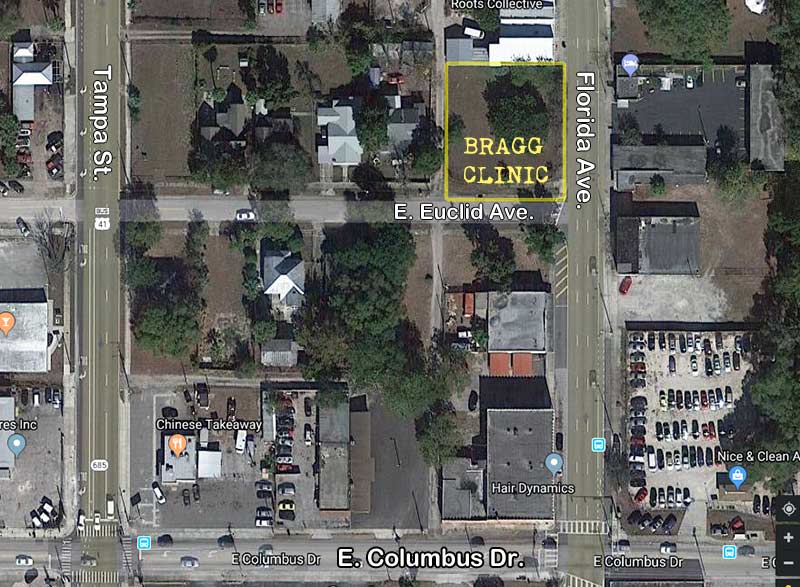
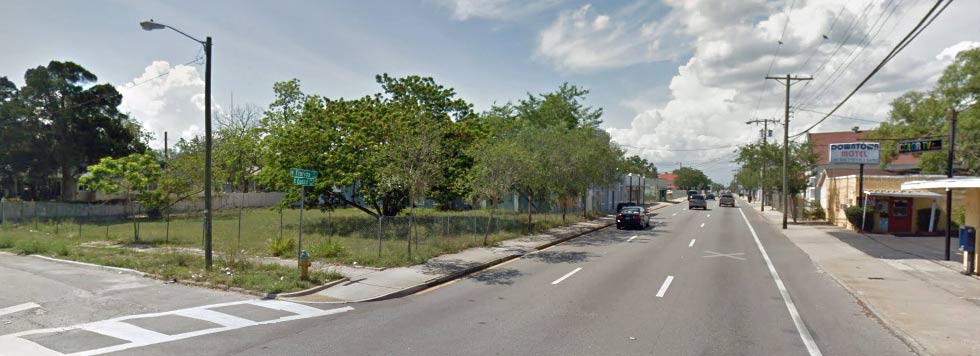
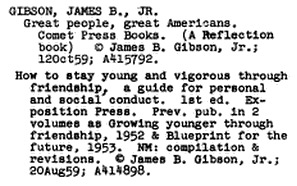 1953-May
6: Bragg was co-instructor with motivational
speaker James B. Gibson in a course of "Growing Younger
Through Friendship" and "Blue Print for the Future." The first
two classes were free and open to the public. Bragg was
also in charge of the 30 minute "friendship period" after the
class.
1953-May
6: Bragg was co-instructor with motivational
speaker James B. Gibson in a course of "Growing Younger
Through Friendship" and "Blue Print for the Future." The first
two classes were free and open to the public. Bragg was
also in charge of the 30 minute "friendship period" after the
class.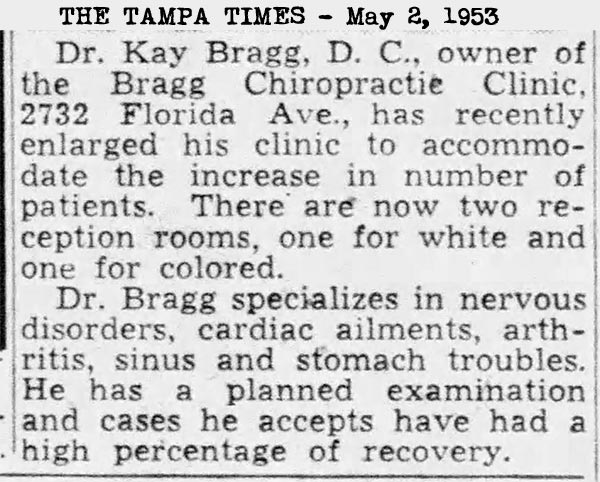
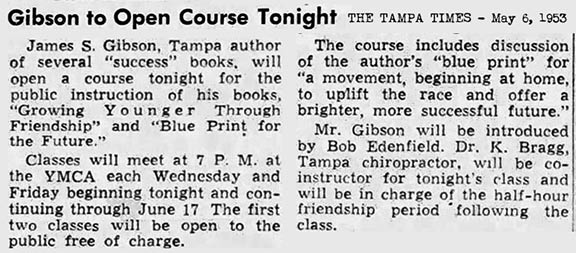
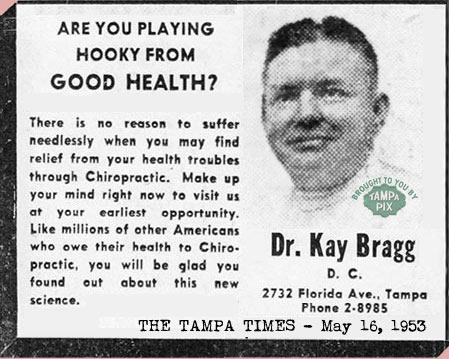
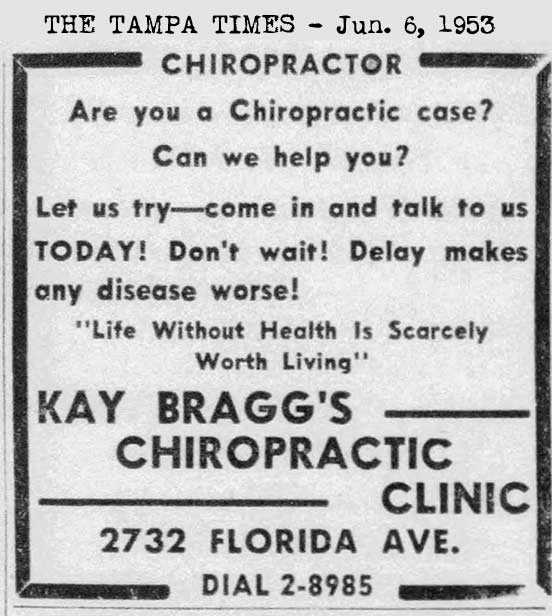
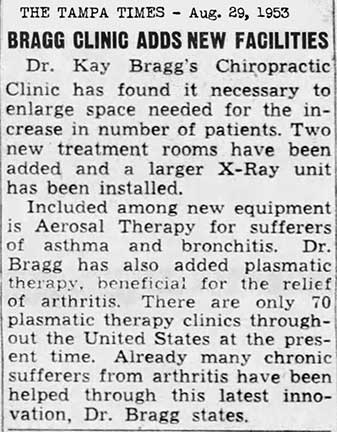
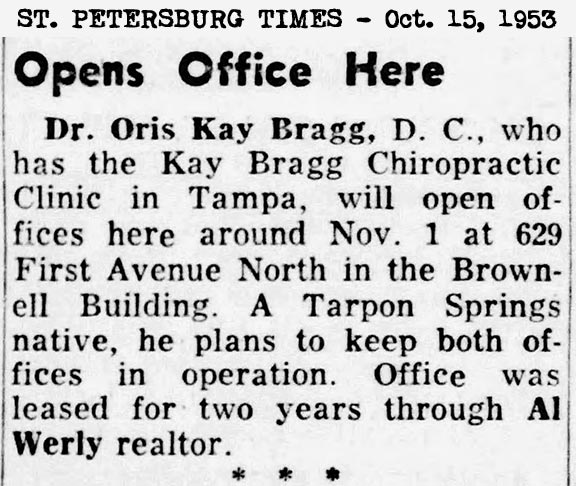
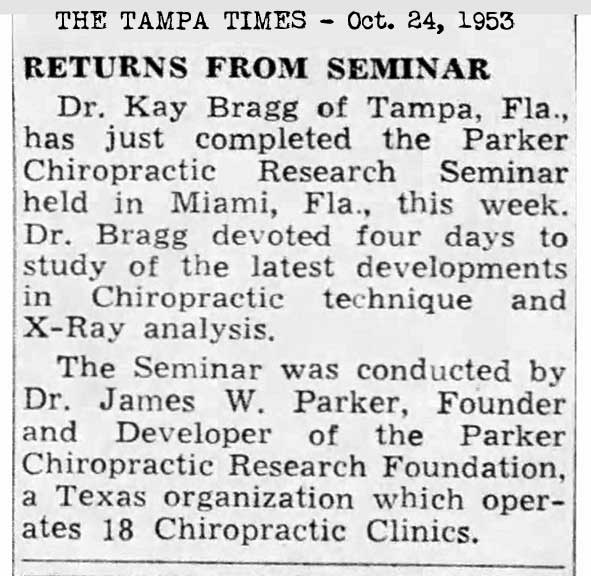
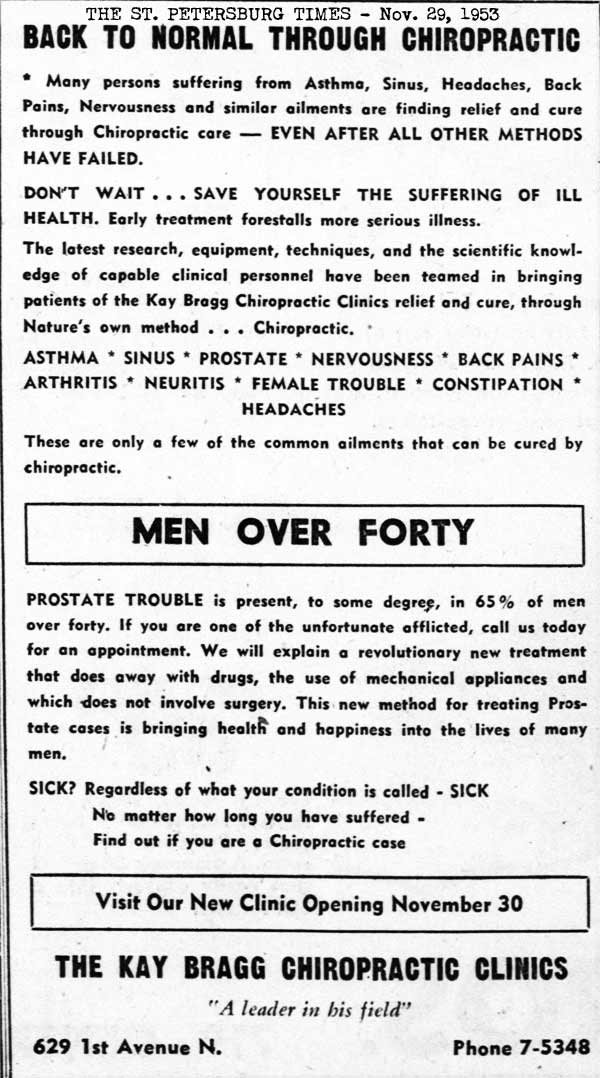
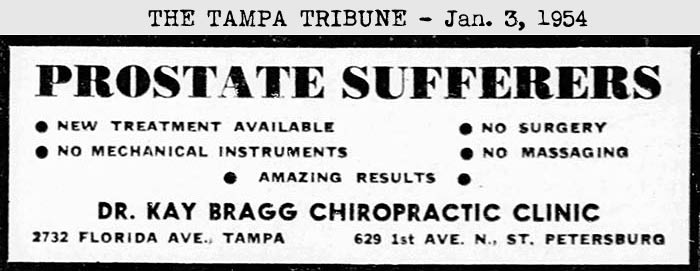
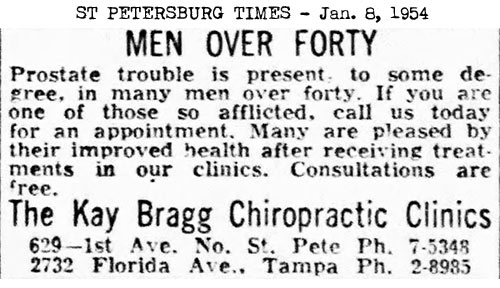
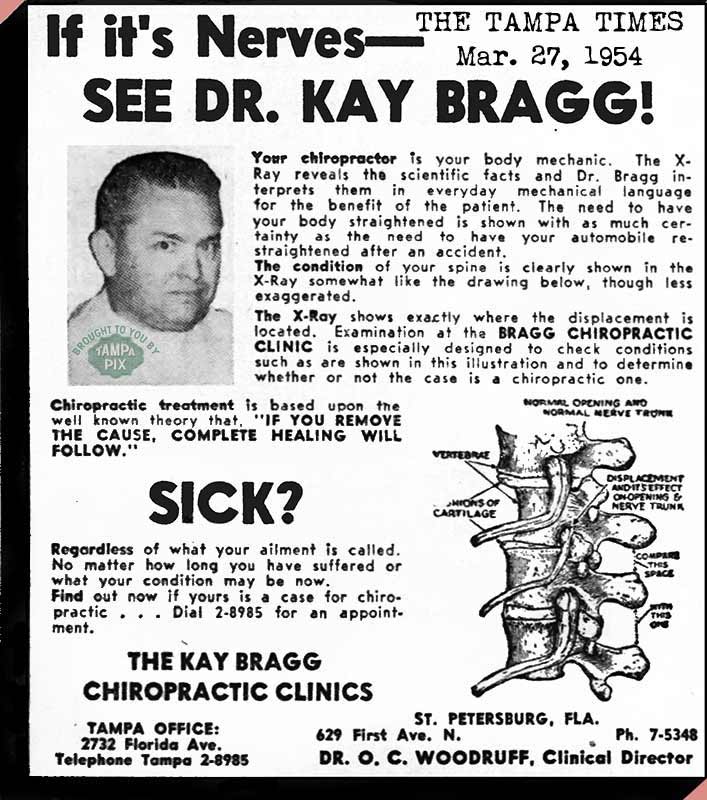
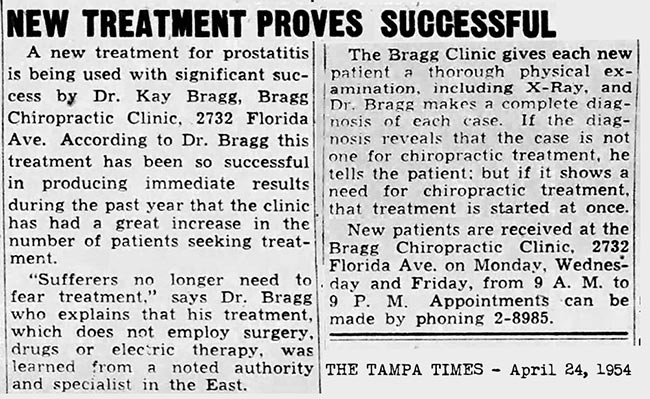

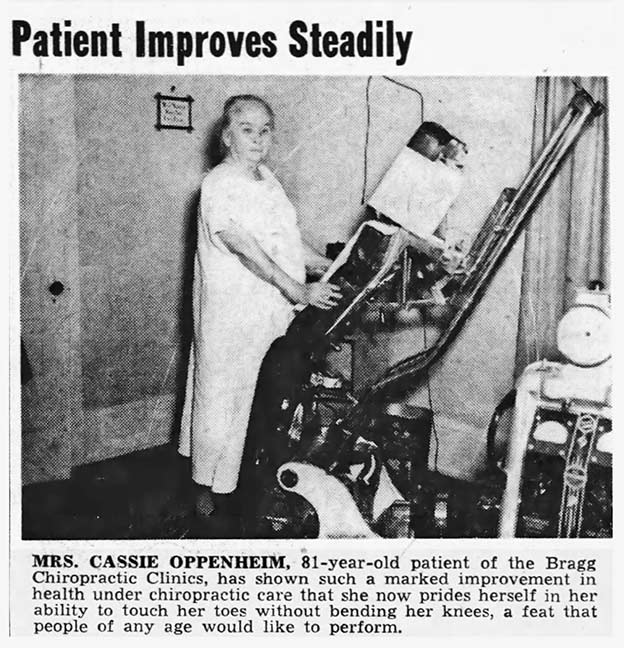
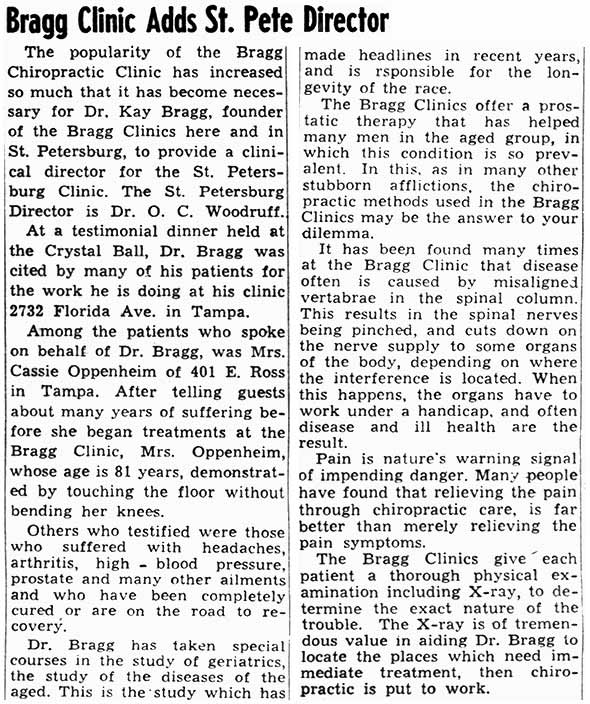
.jpg)
.jpg)
.jpg)

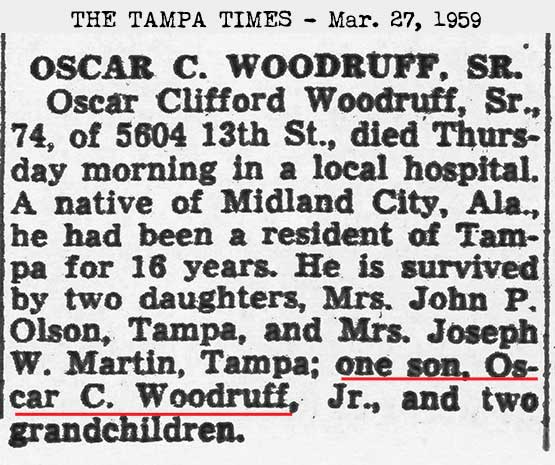
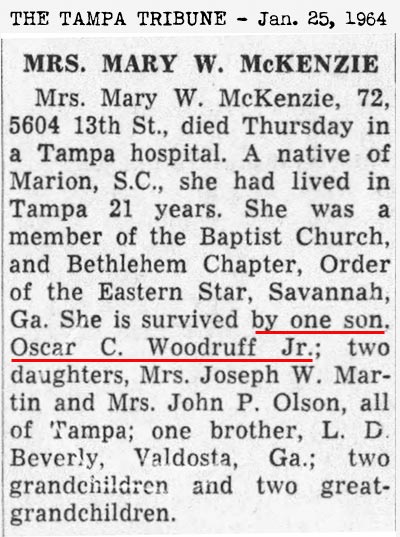

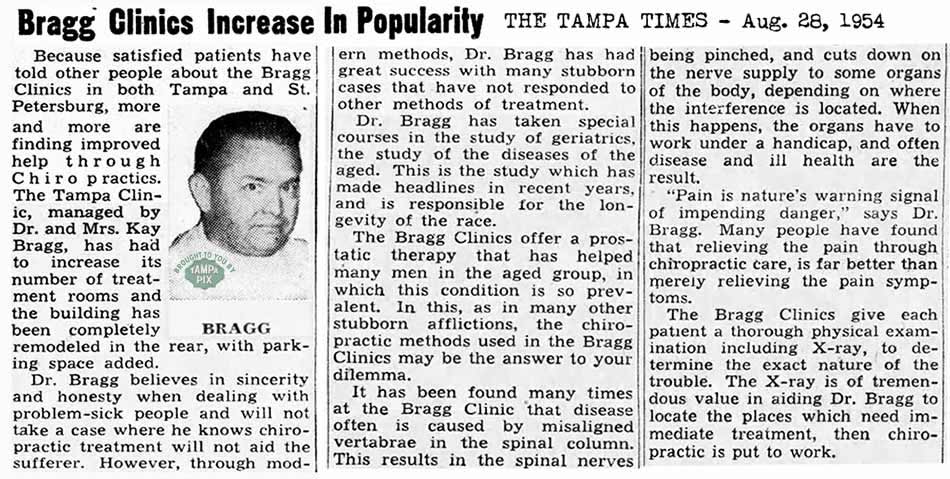
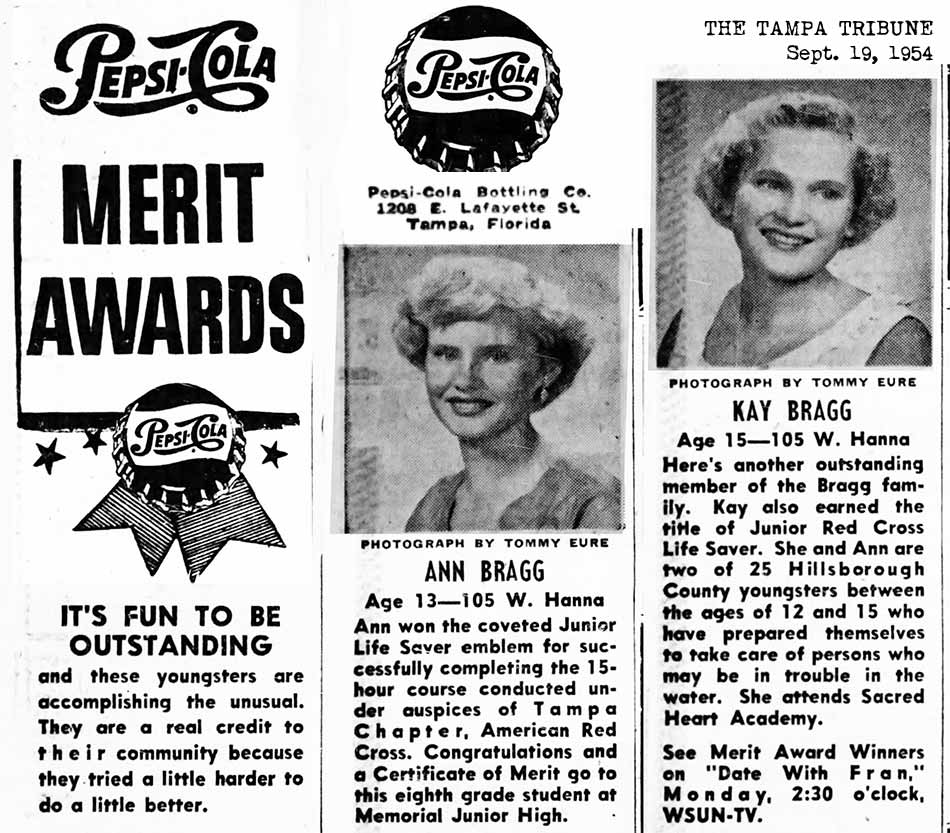


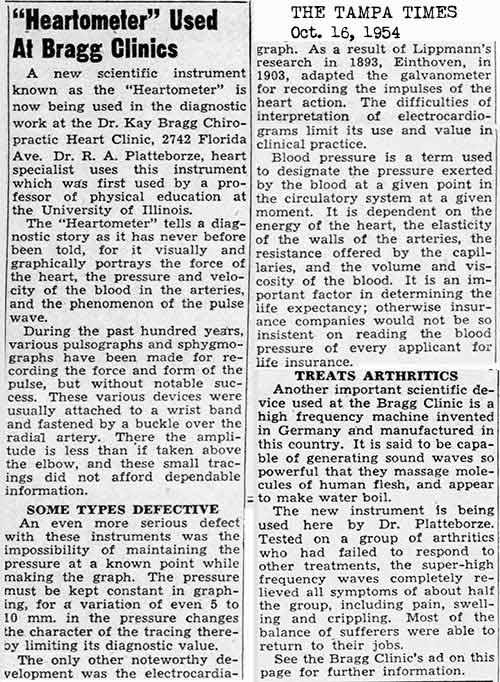
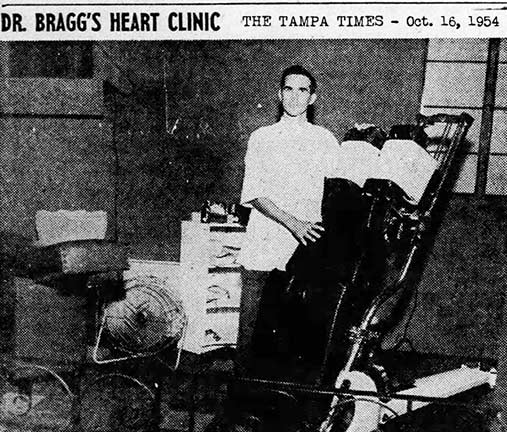
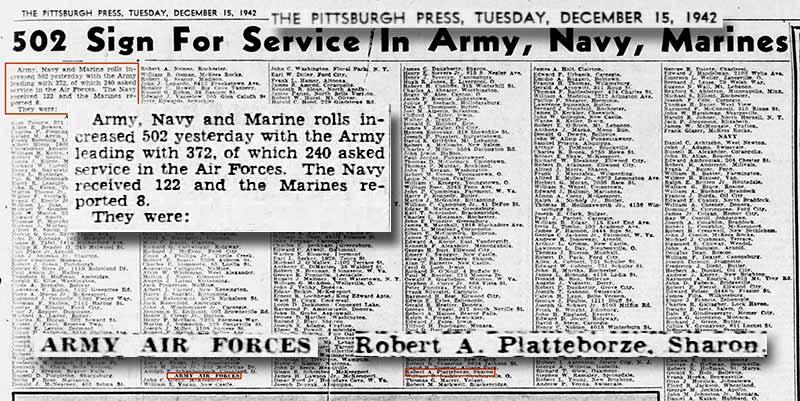
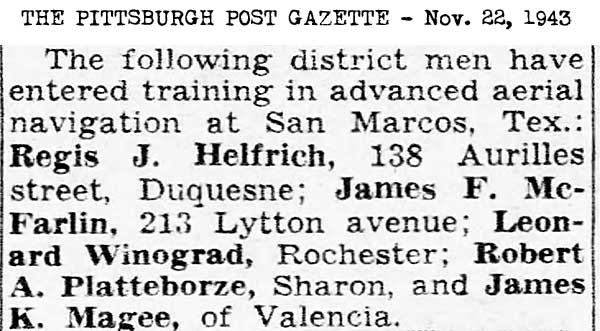
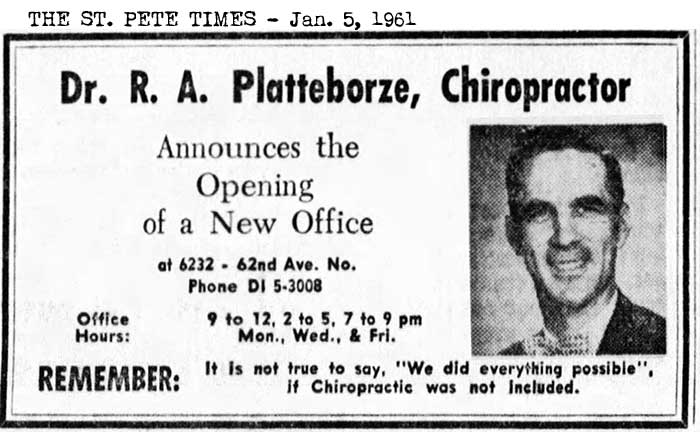
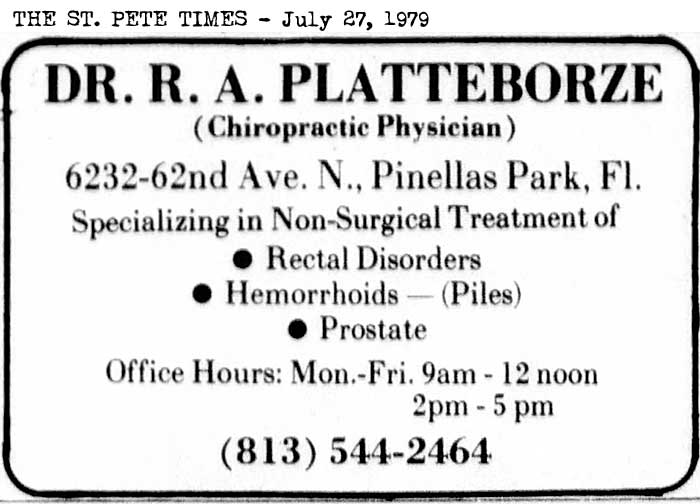
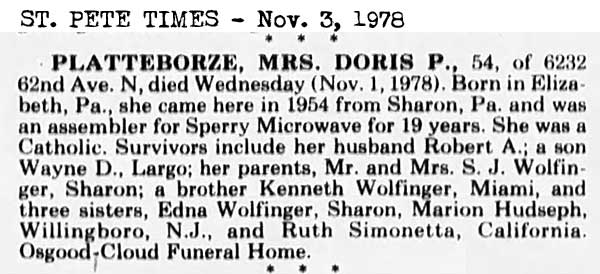 Doris
Platteborze died Nov. 1, 1978 in Pinellas
county at age 54.
Doris
Platteborze died Nov. 1, 1978 in Pinellas
county at age 54.